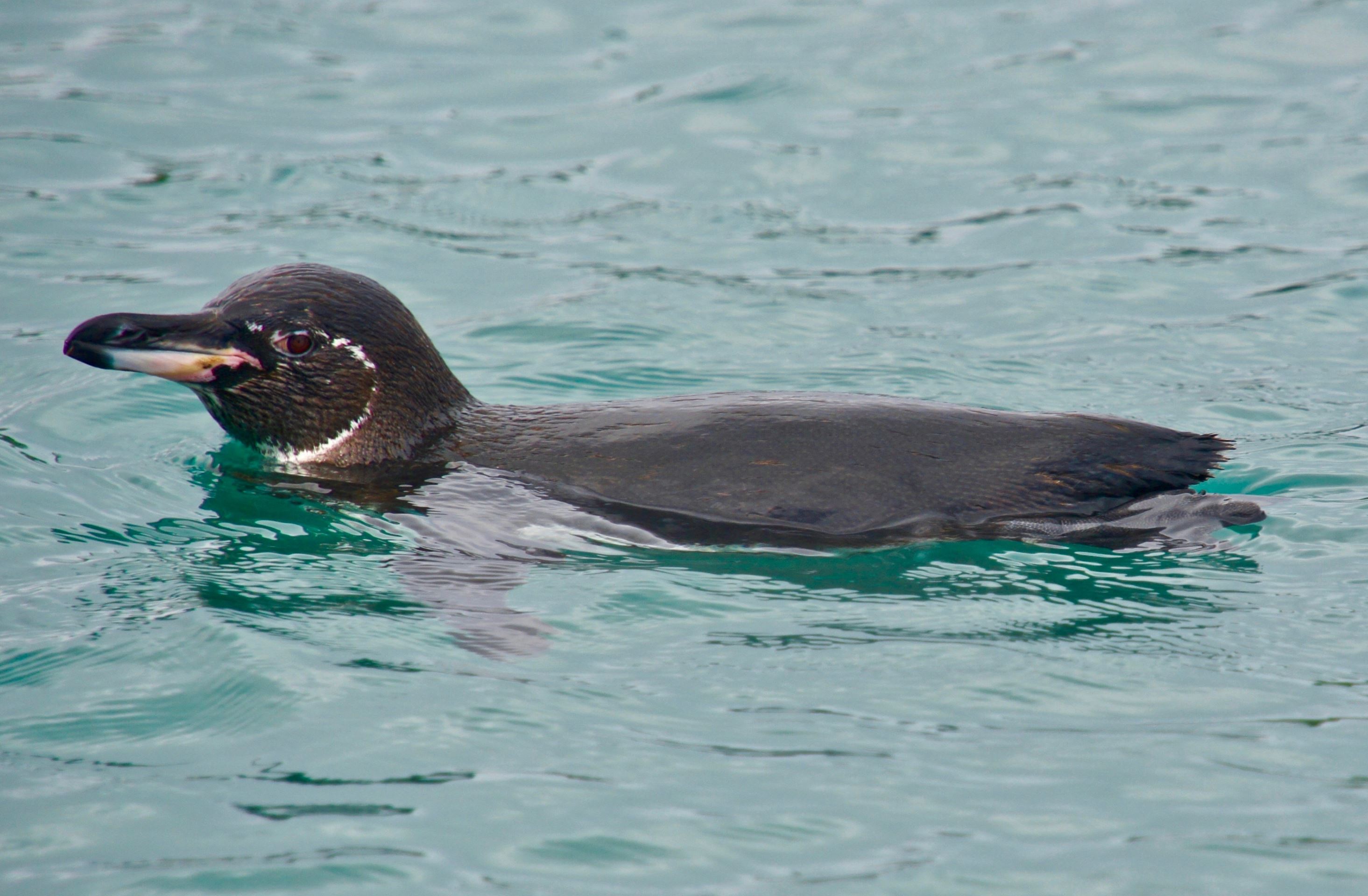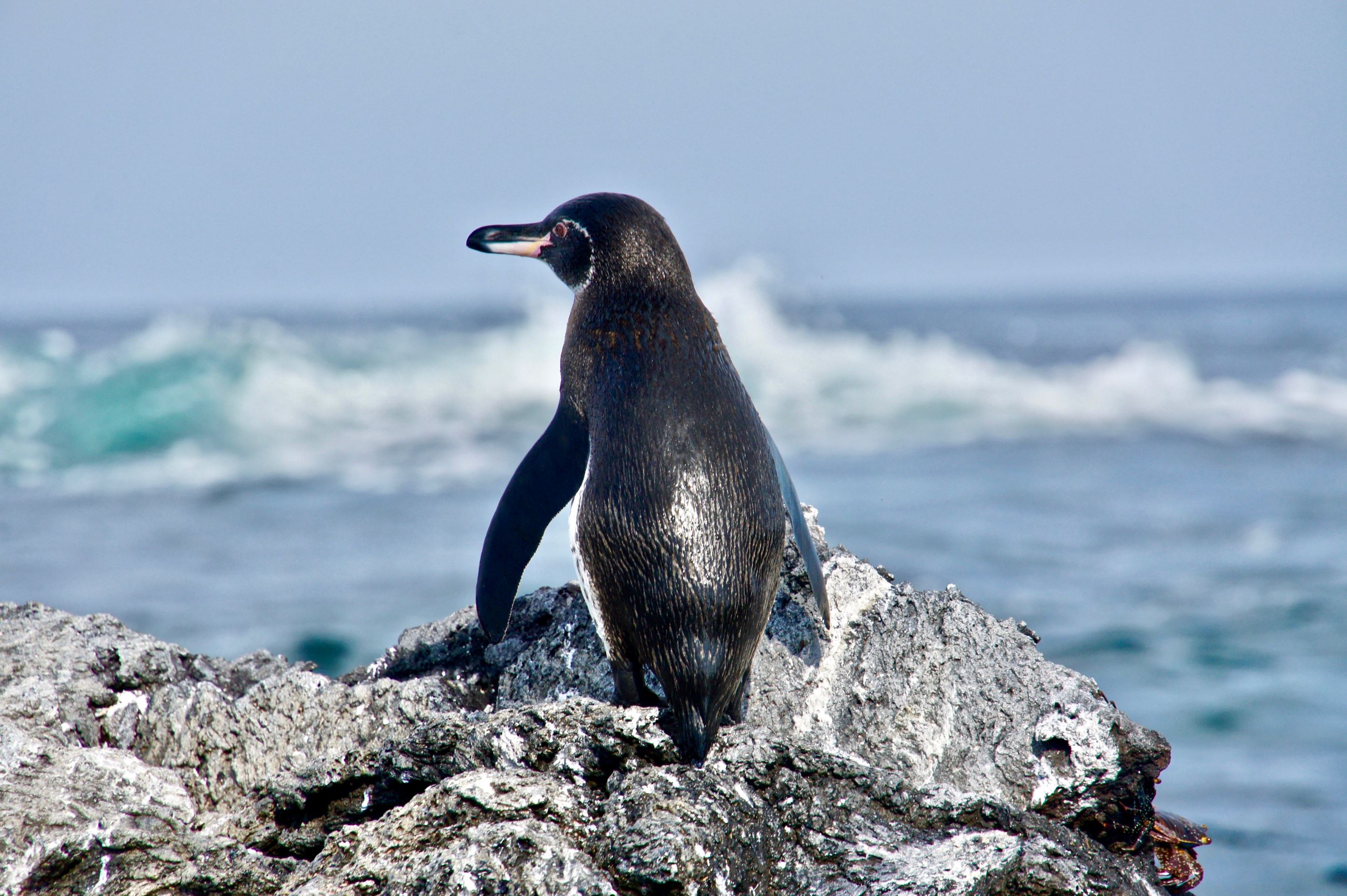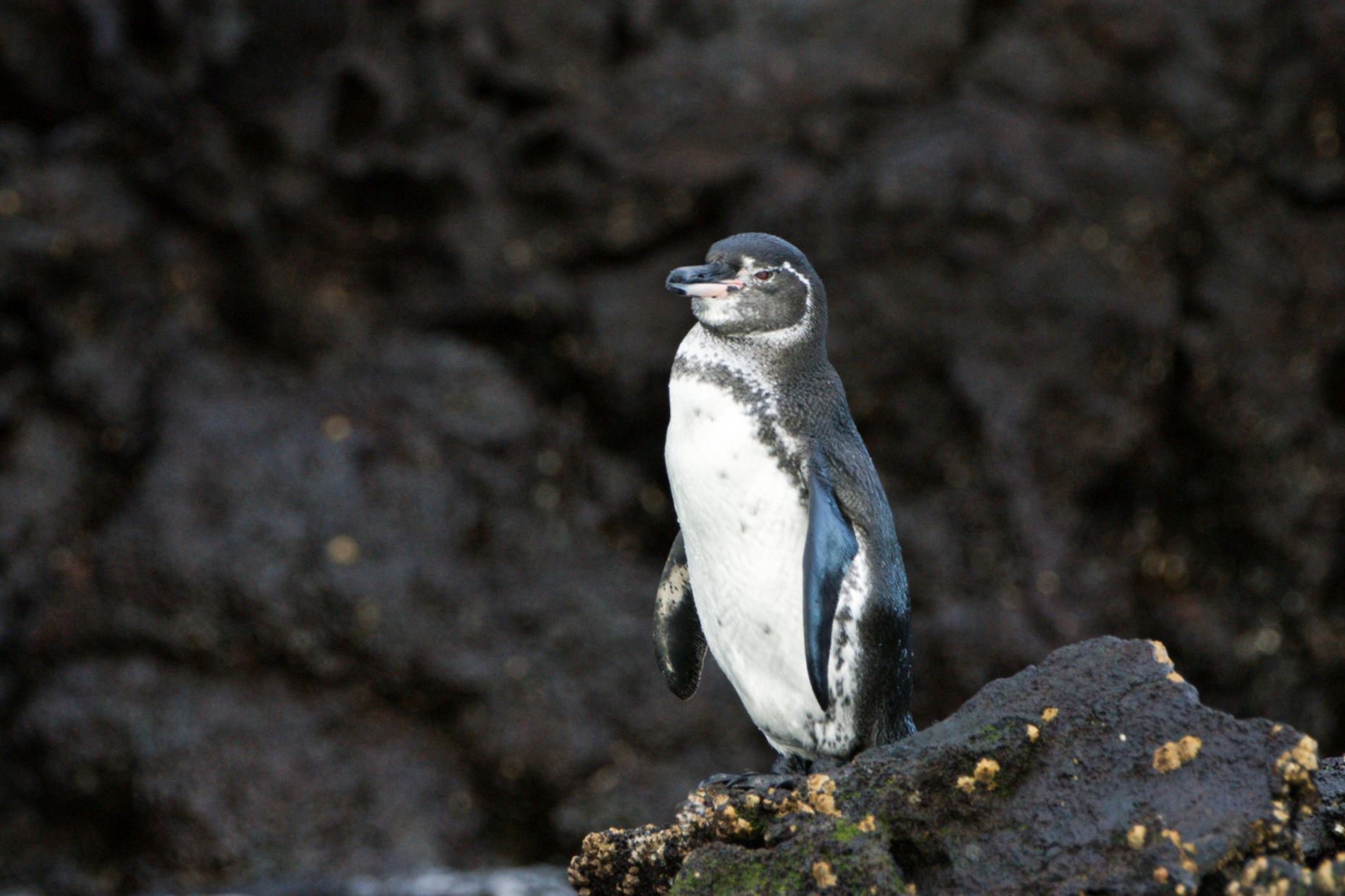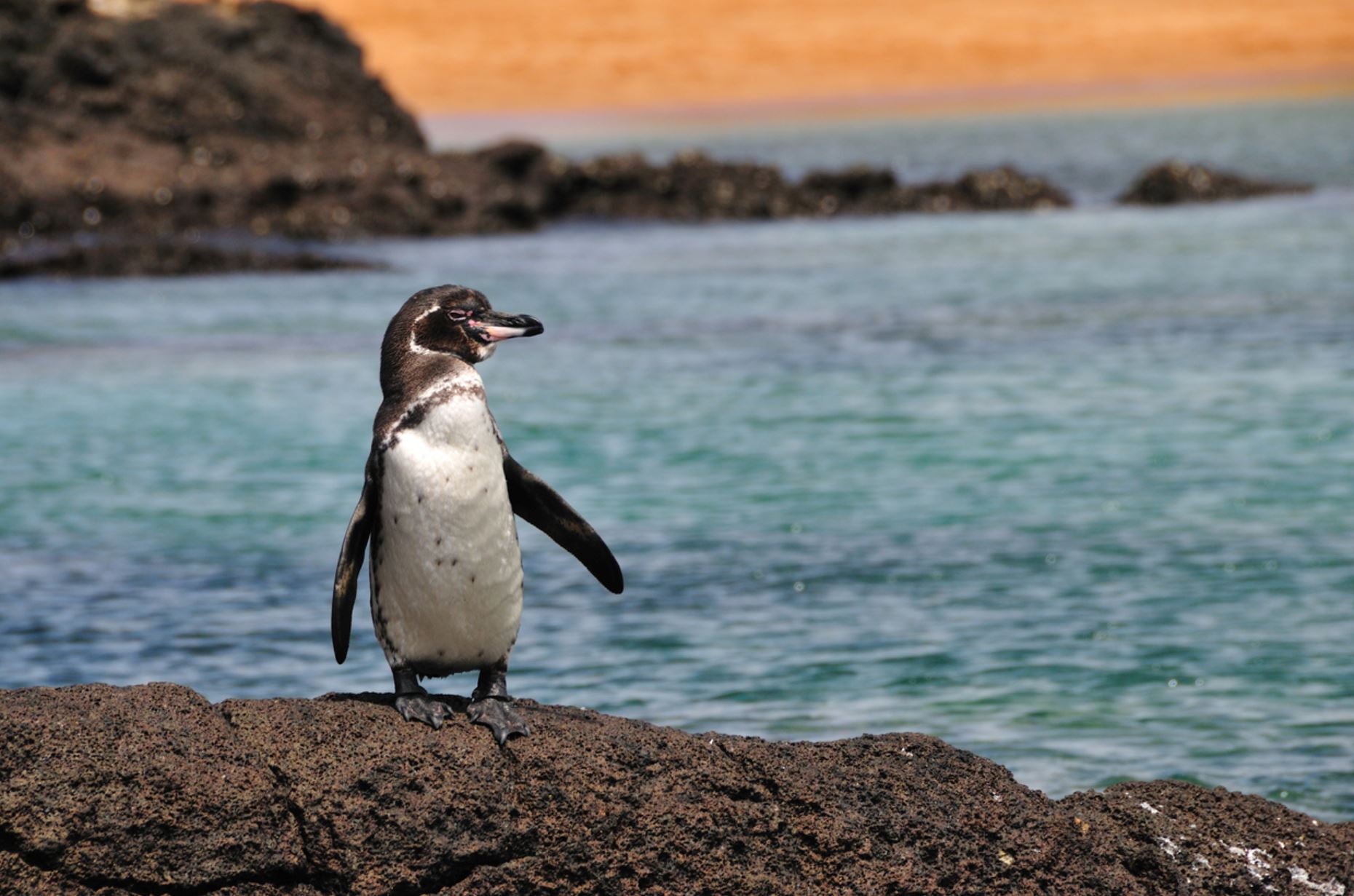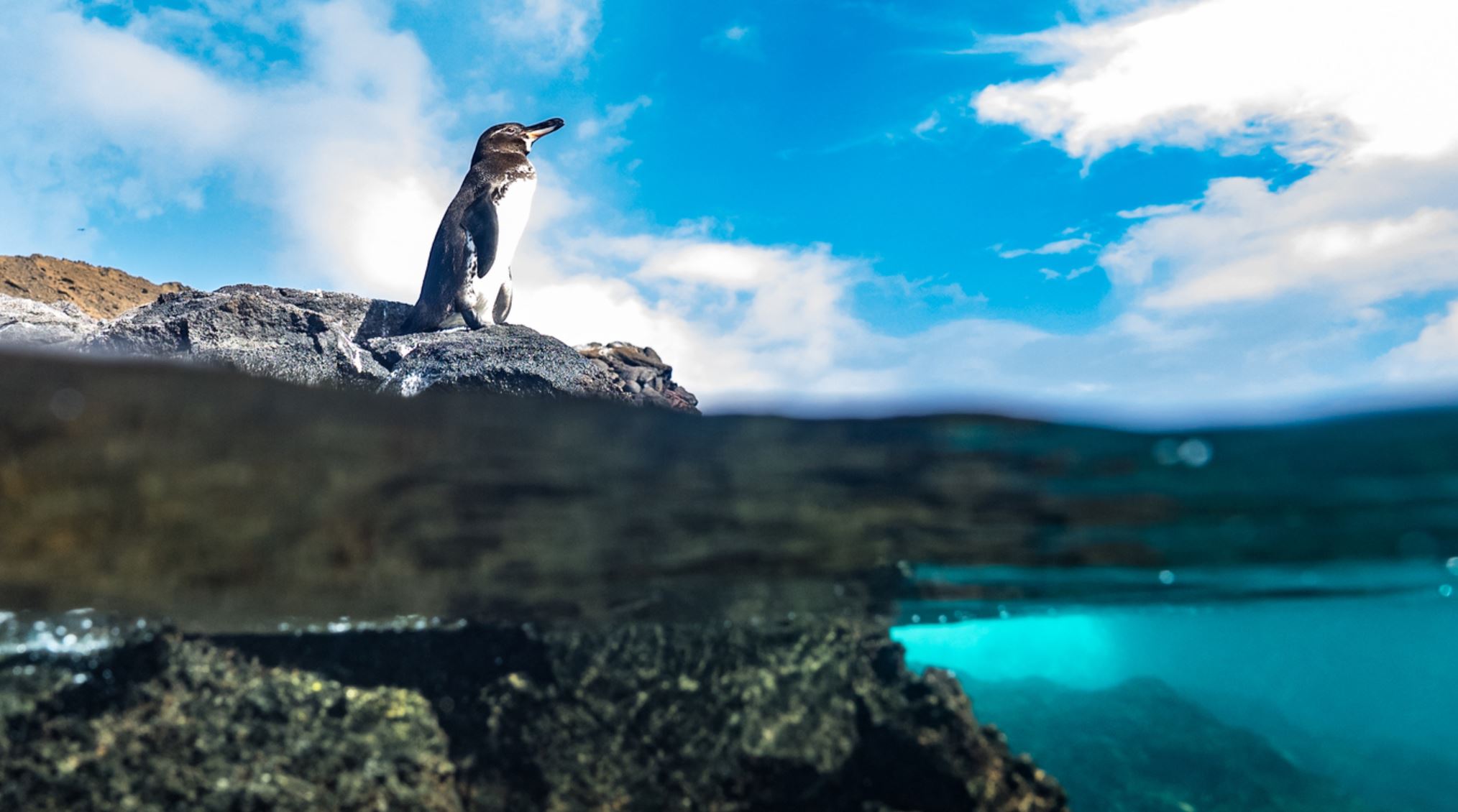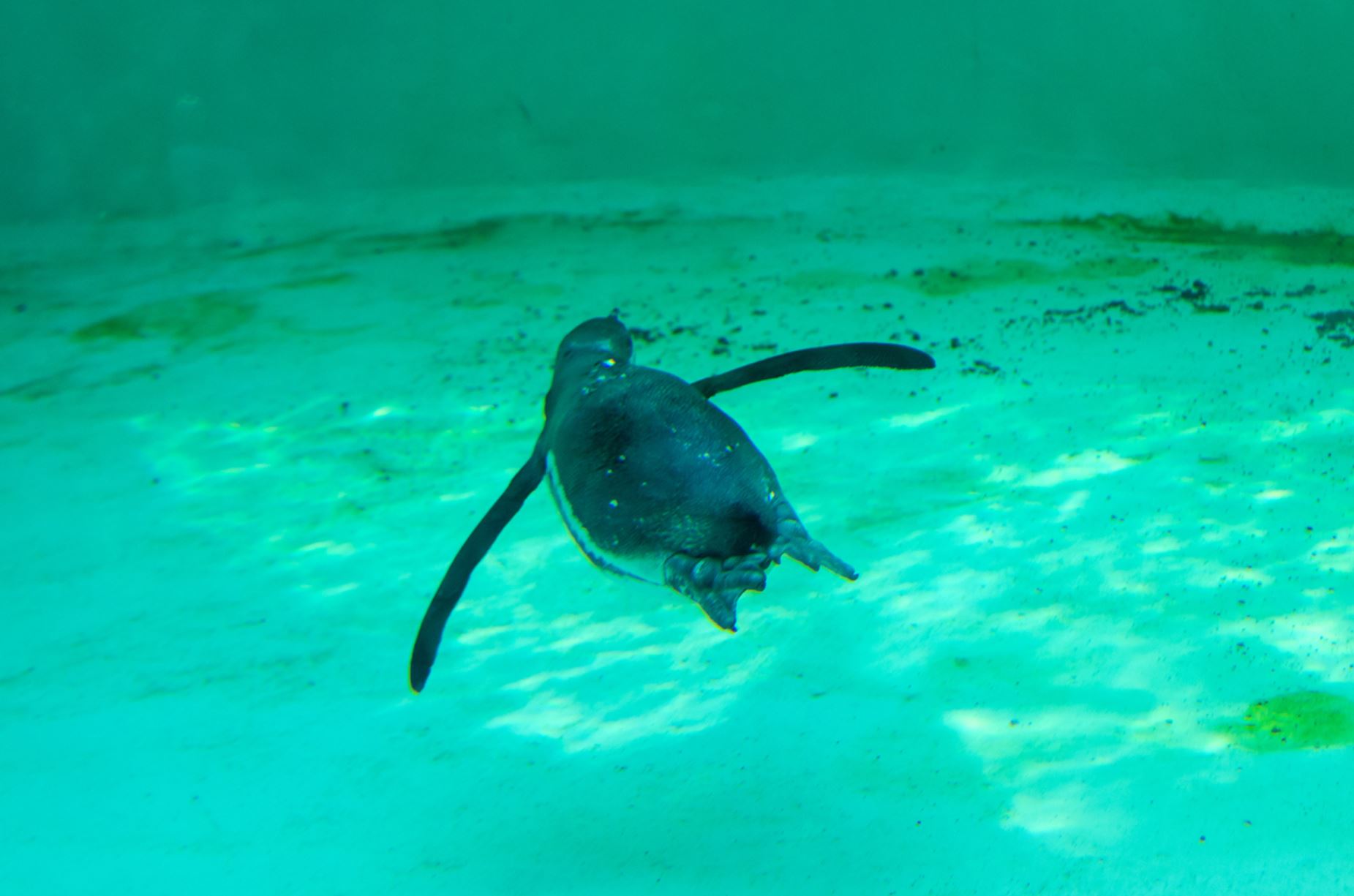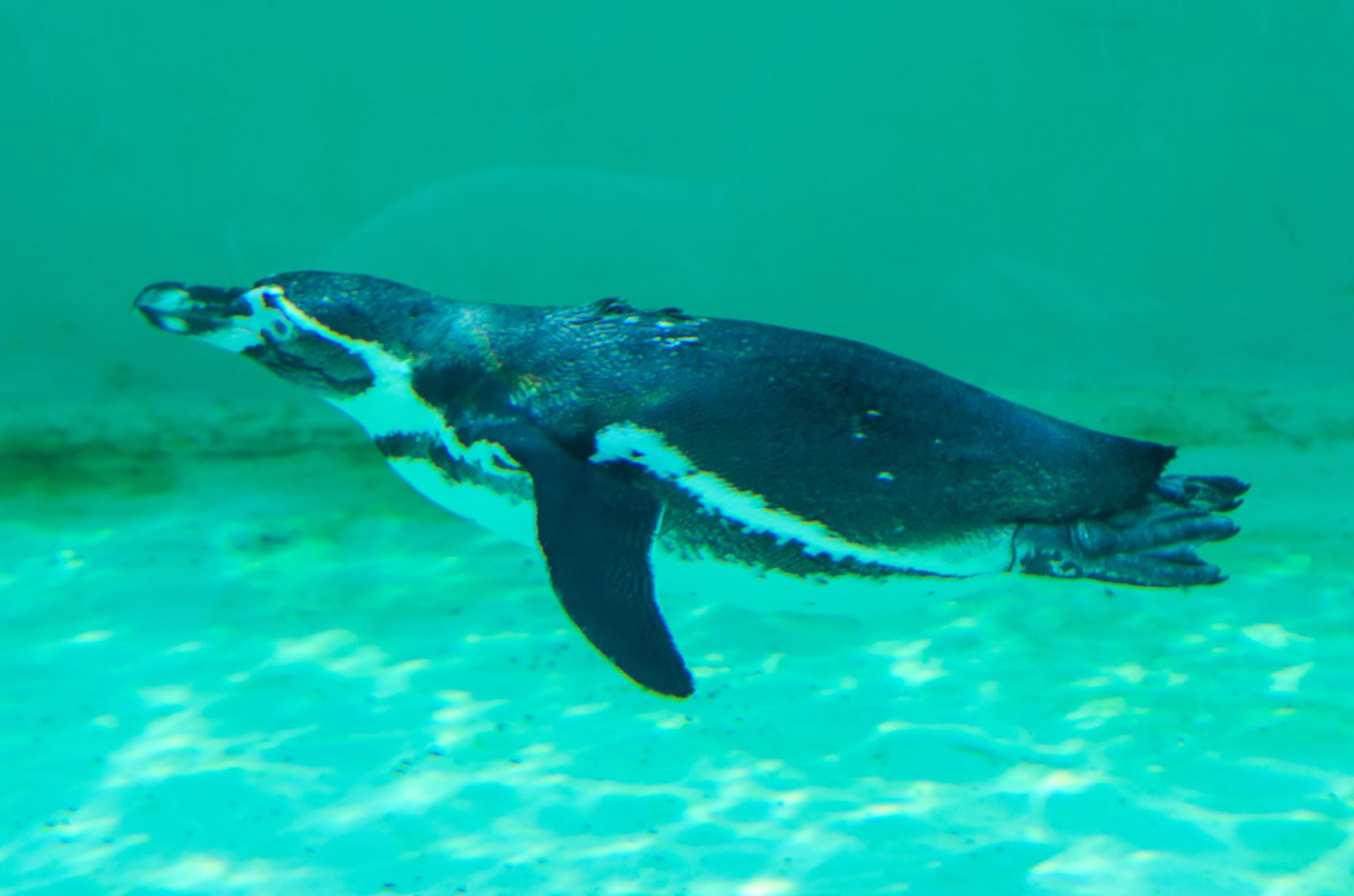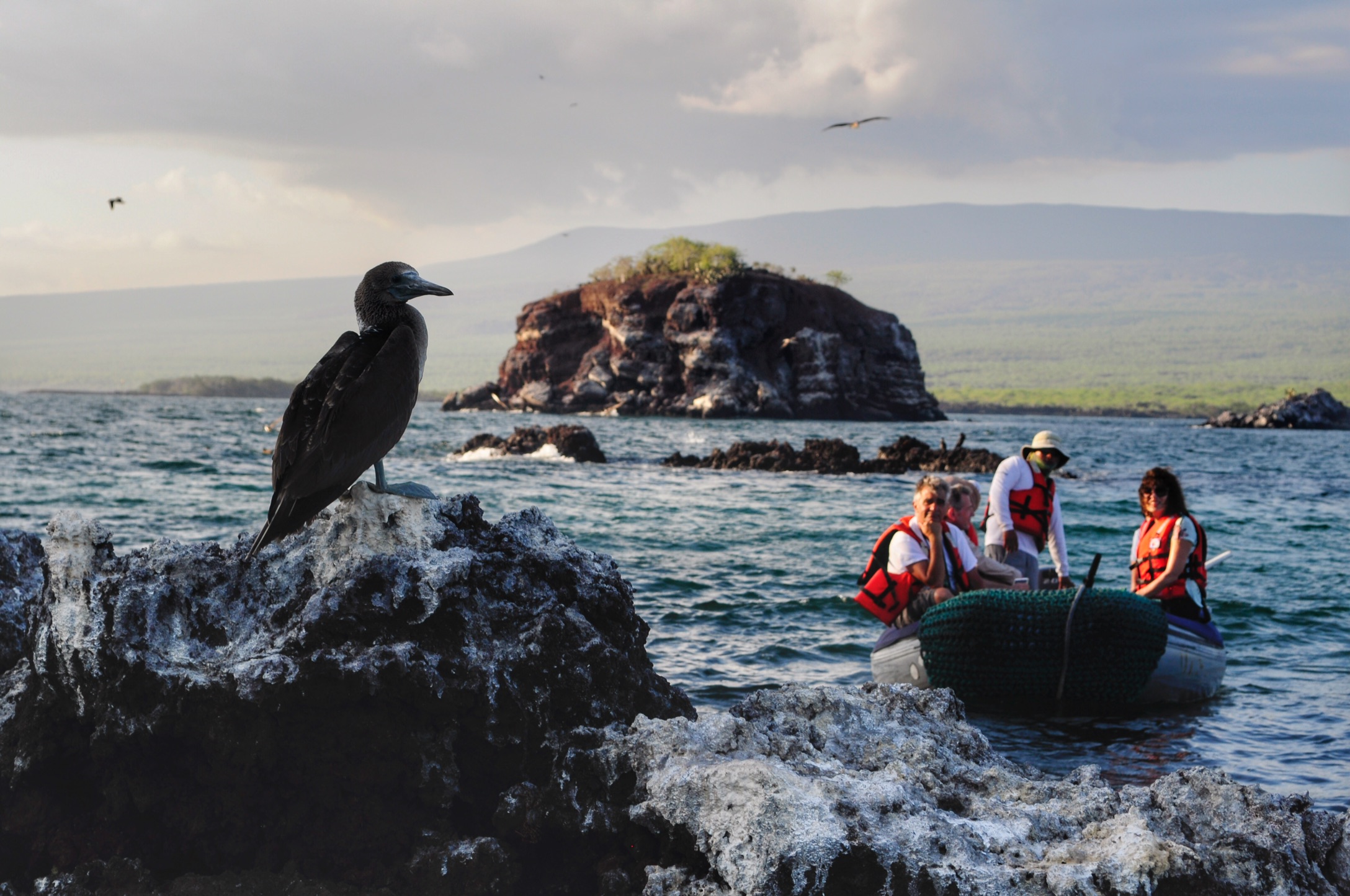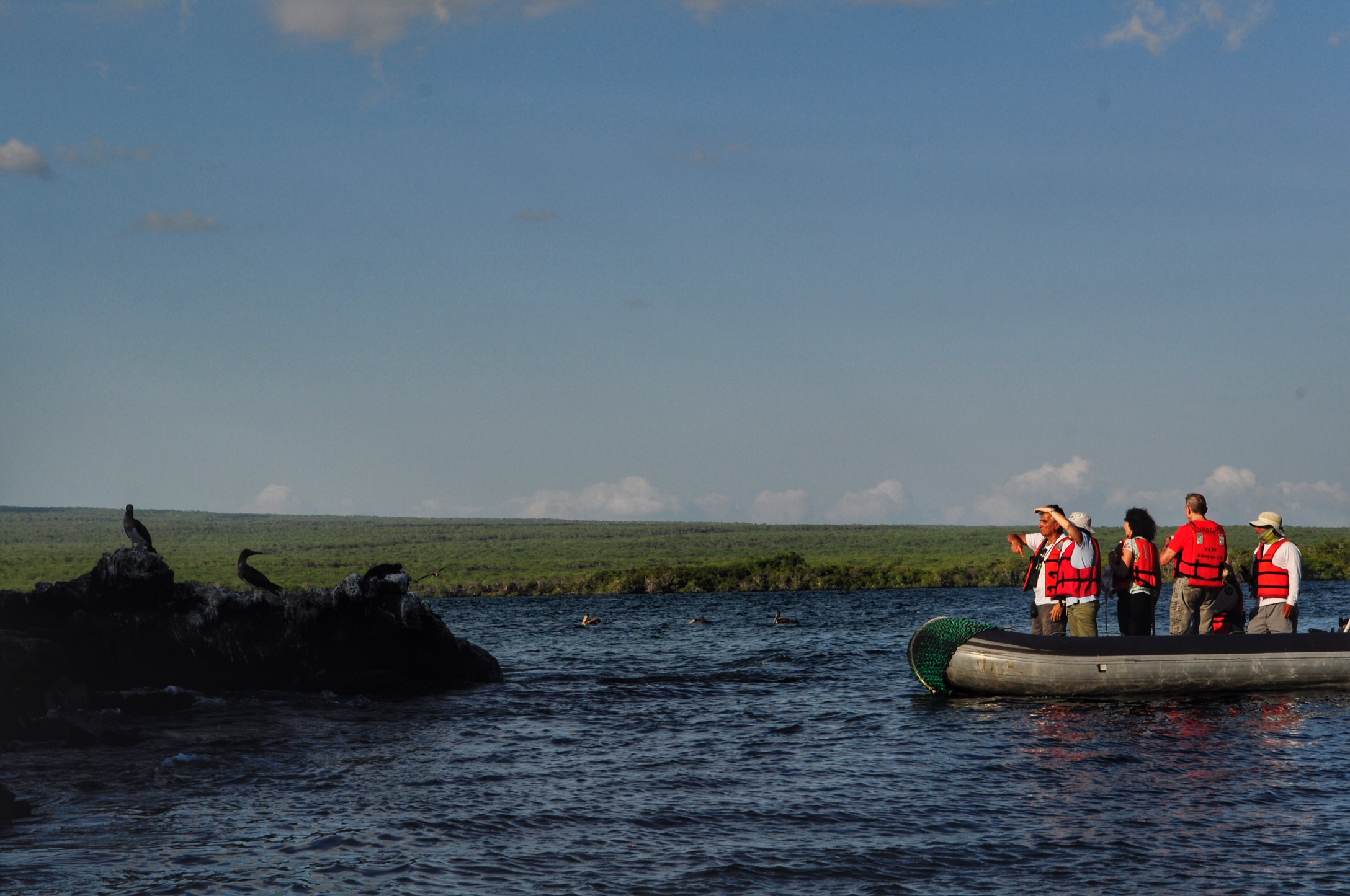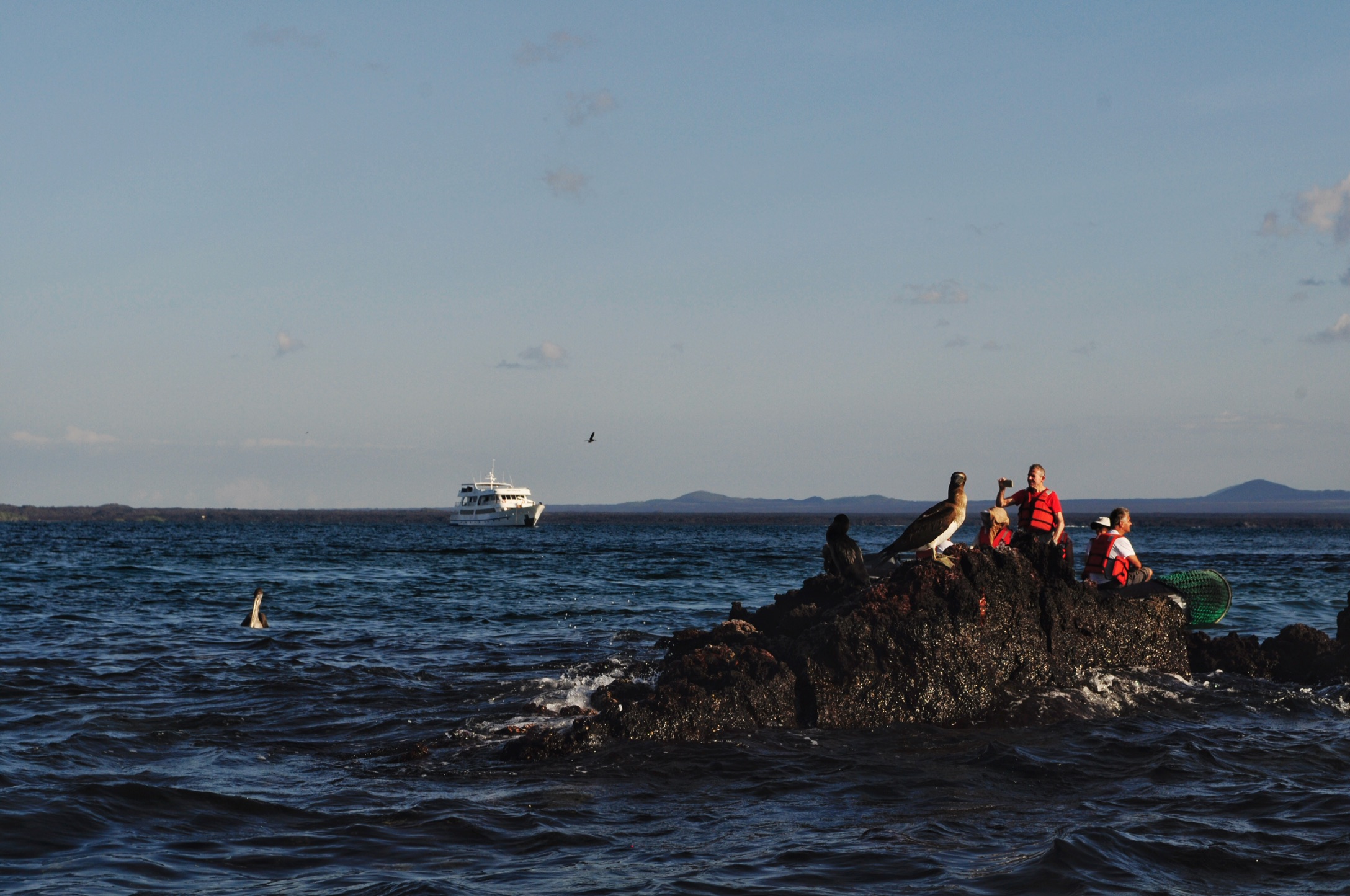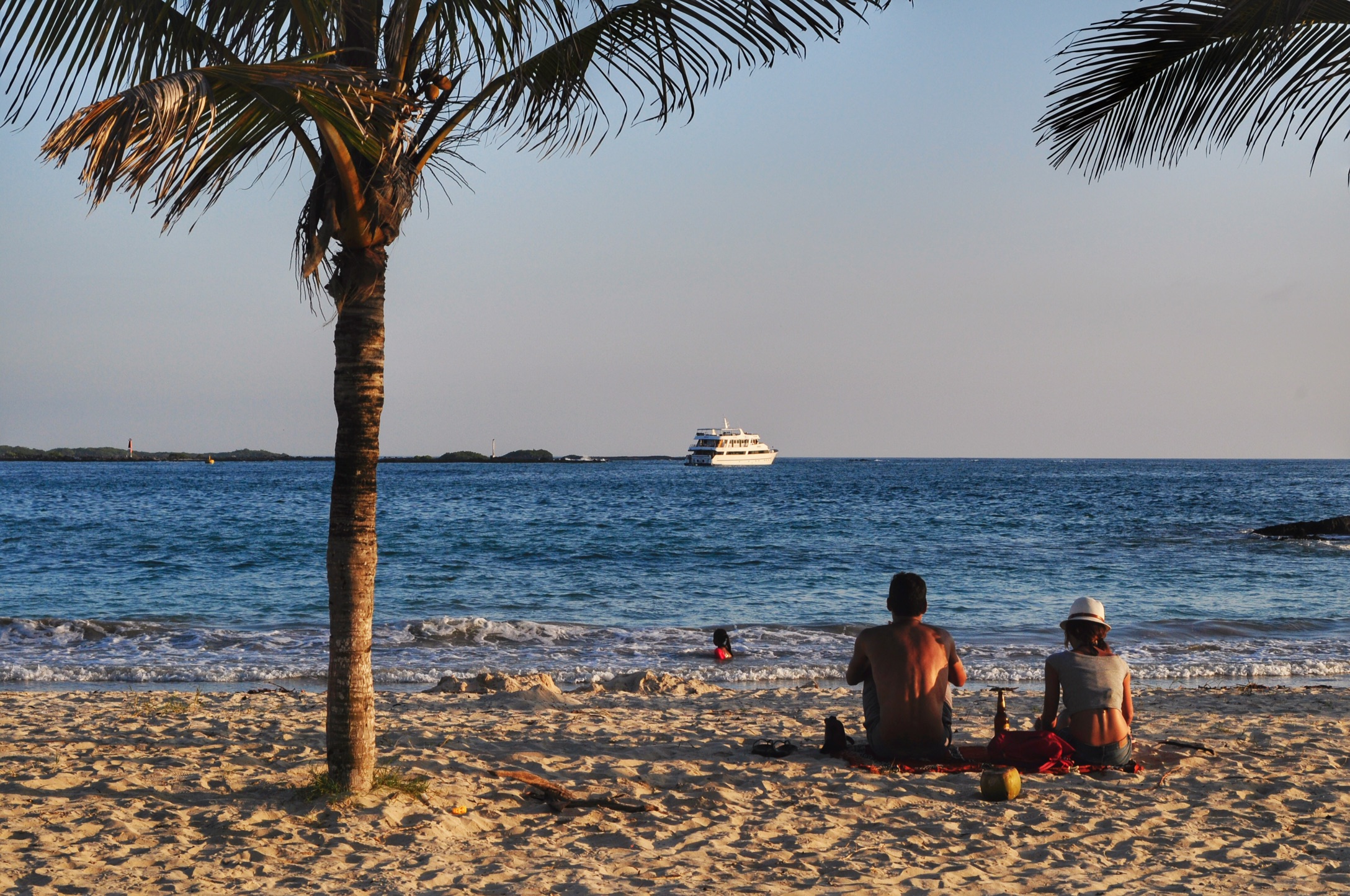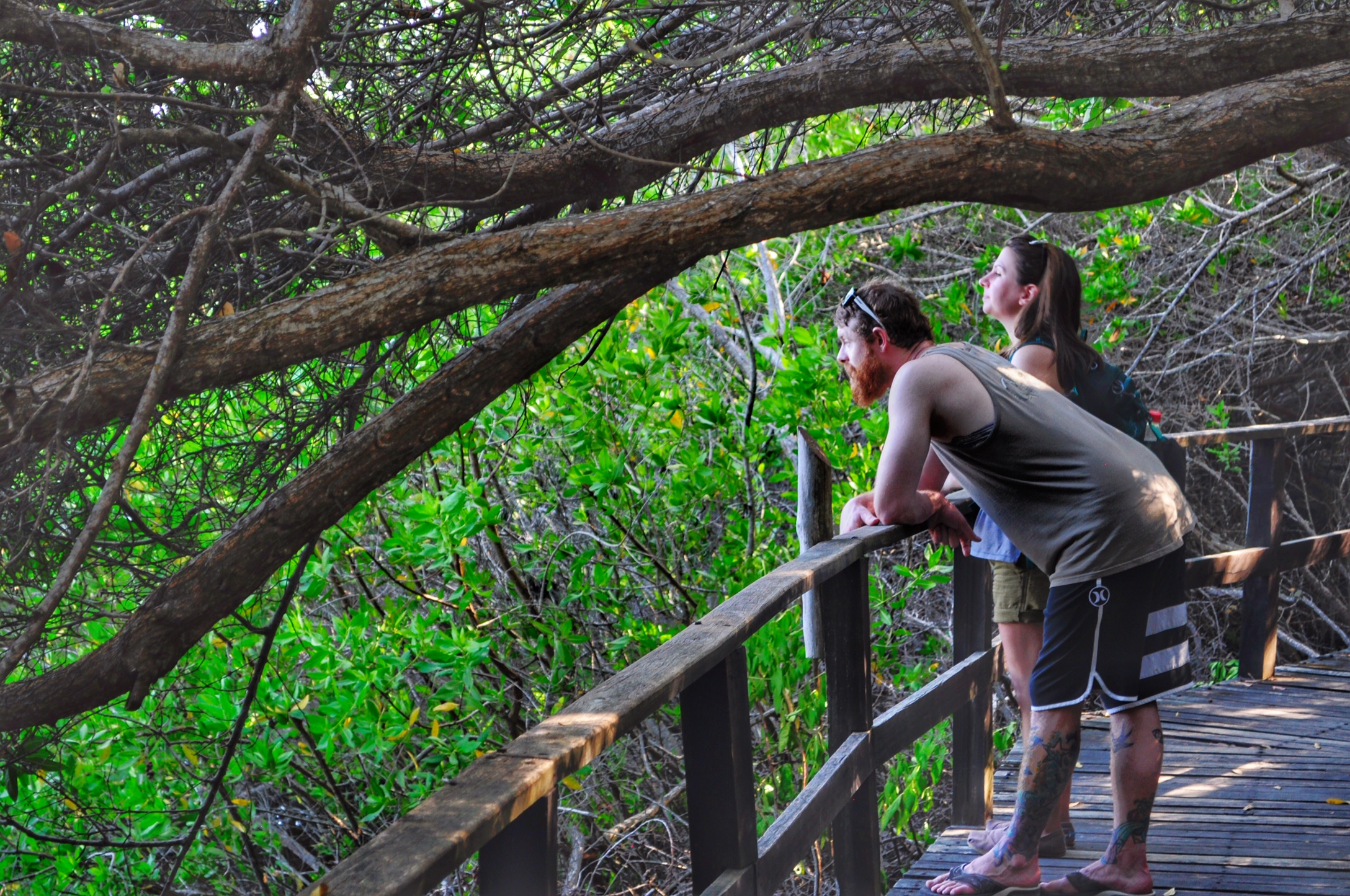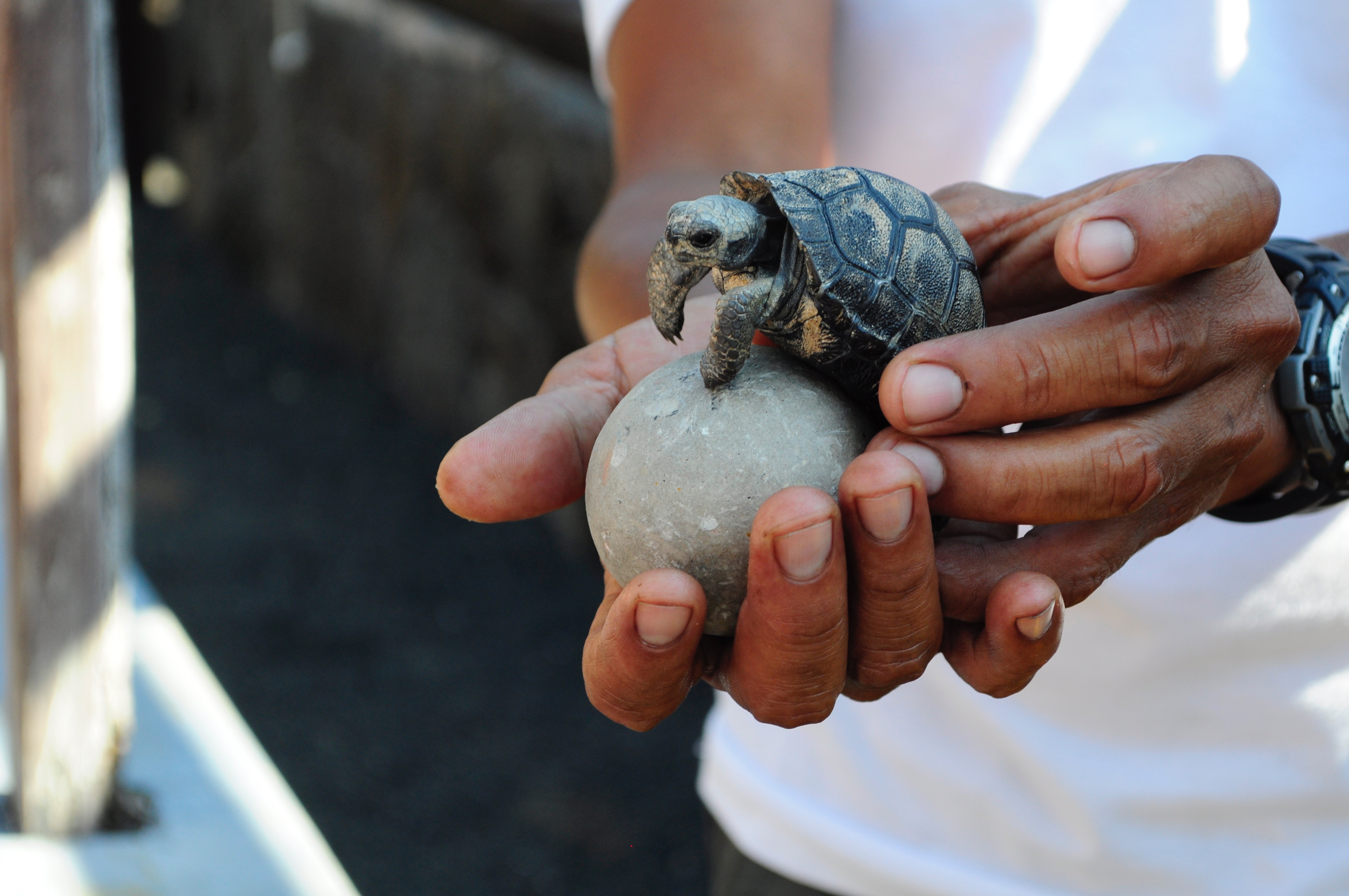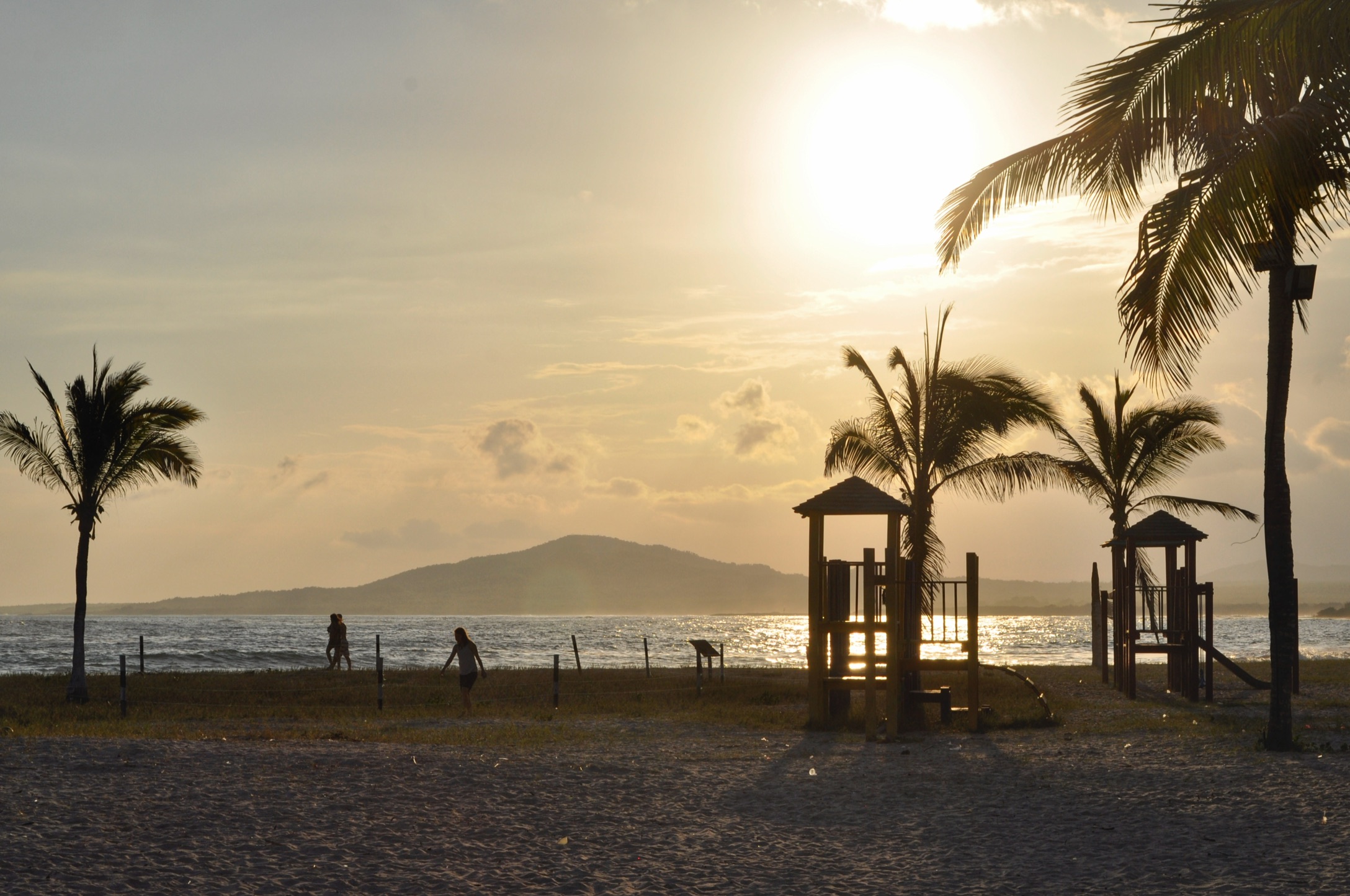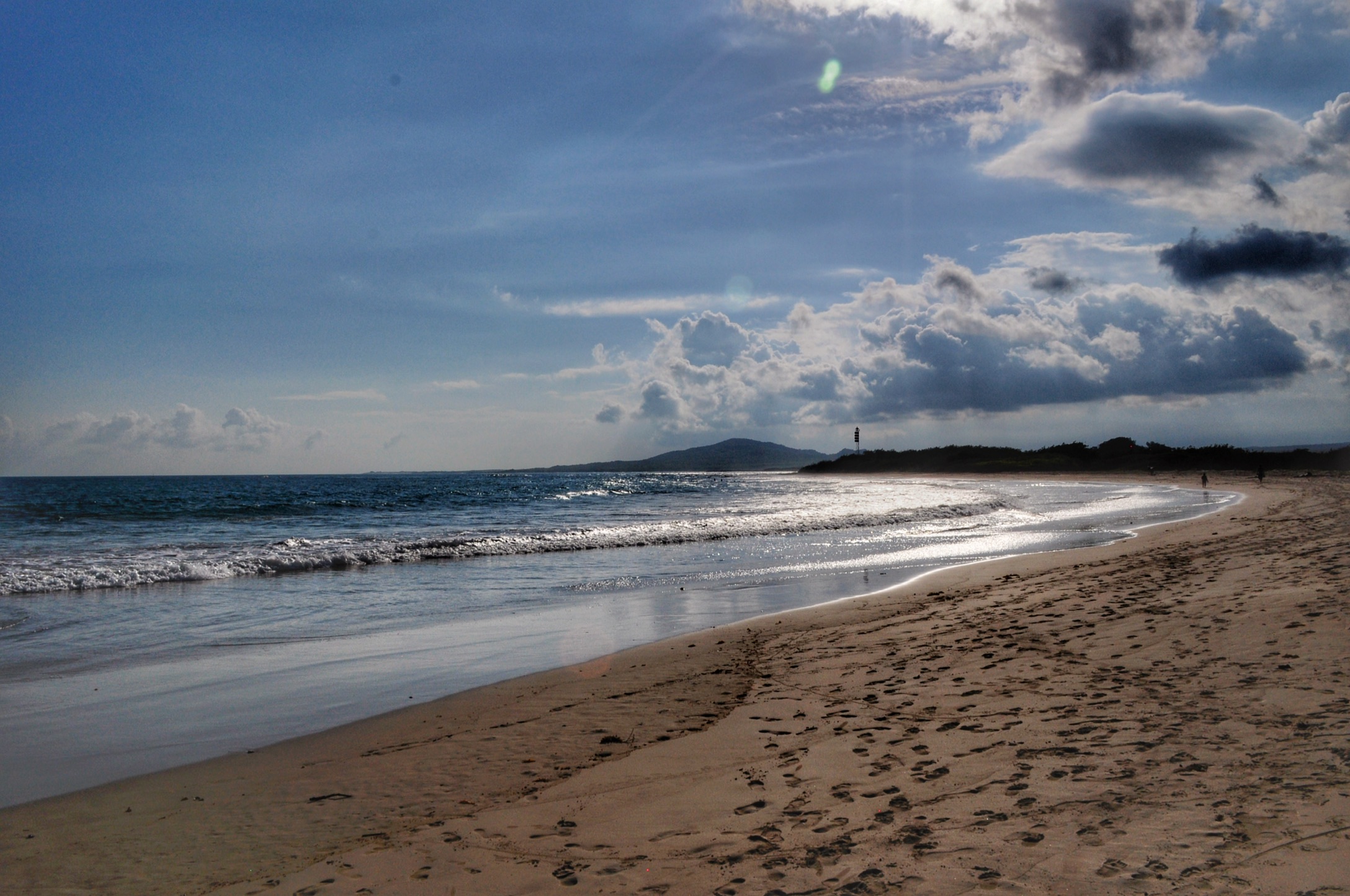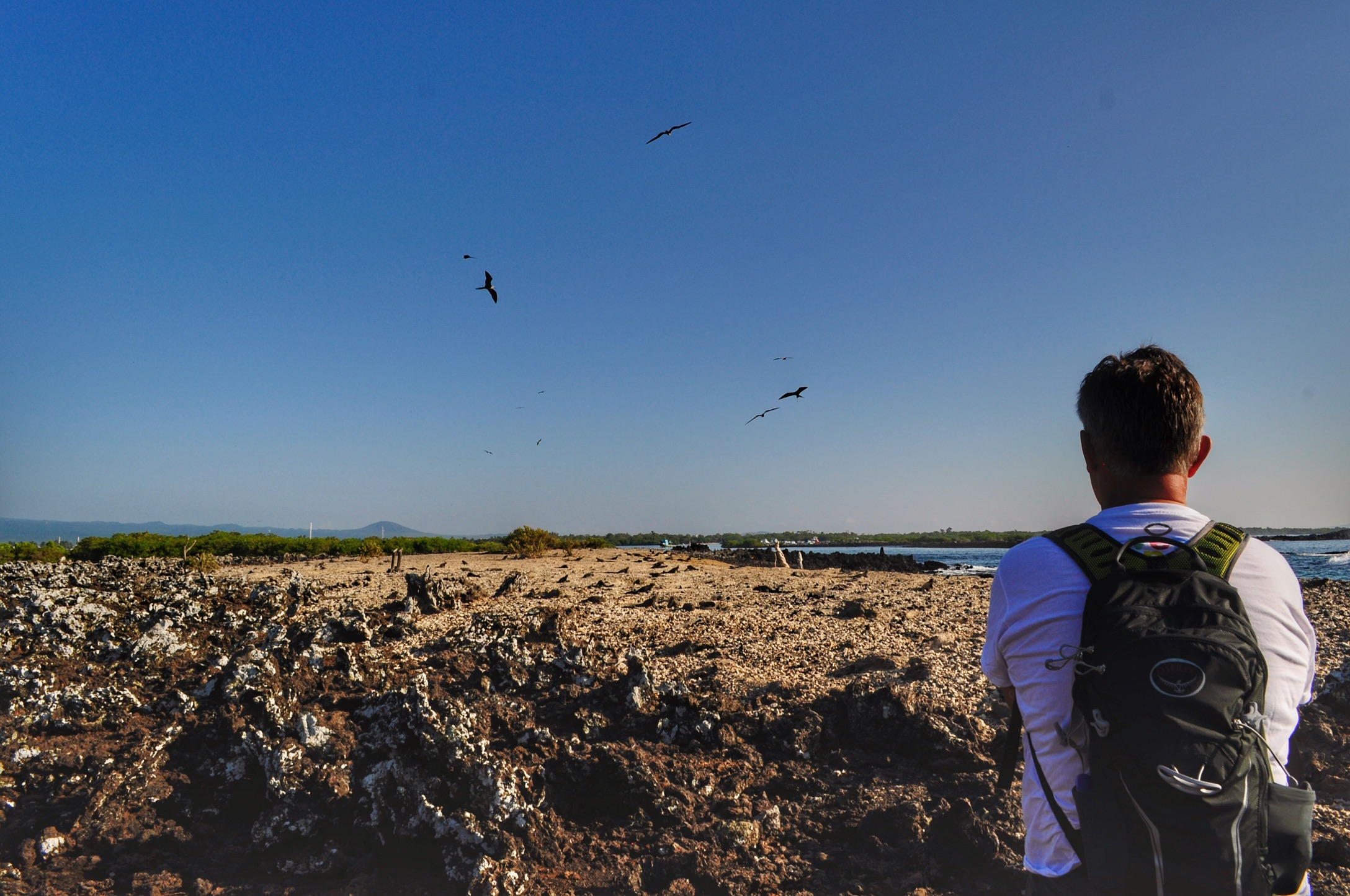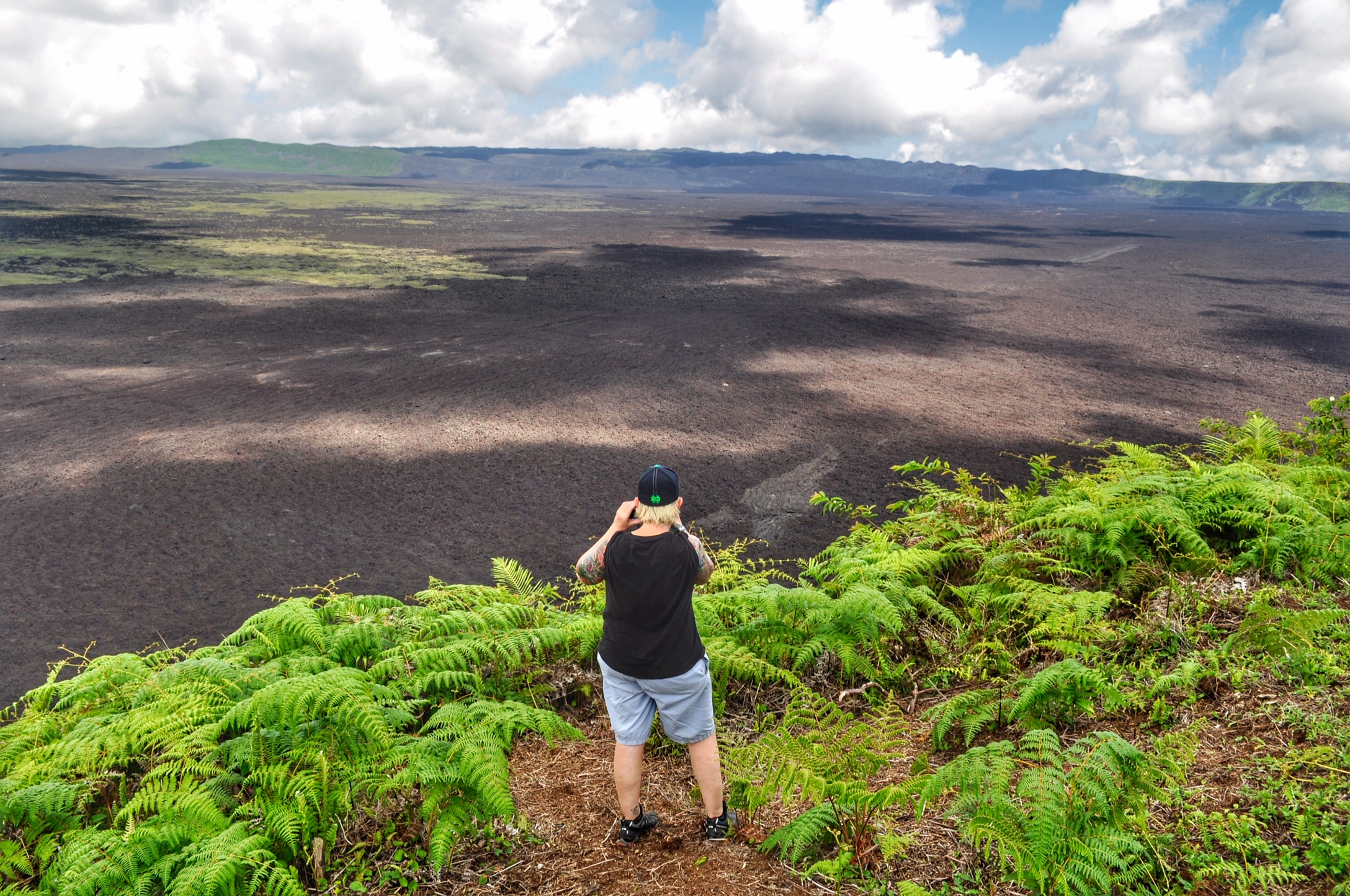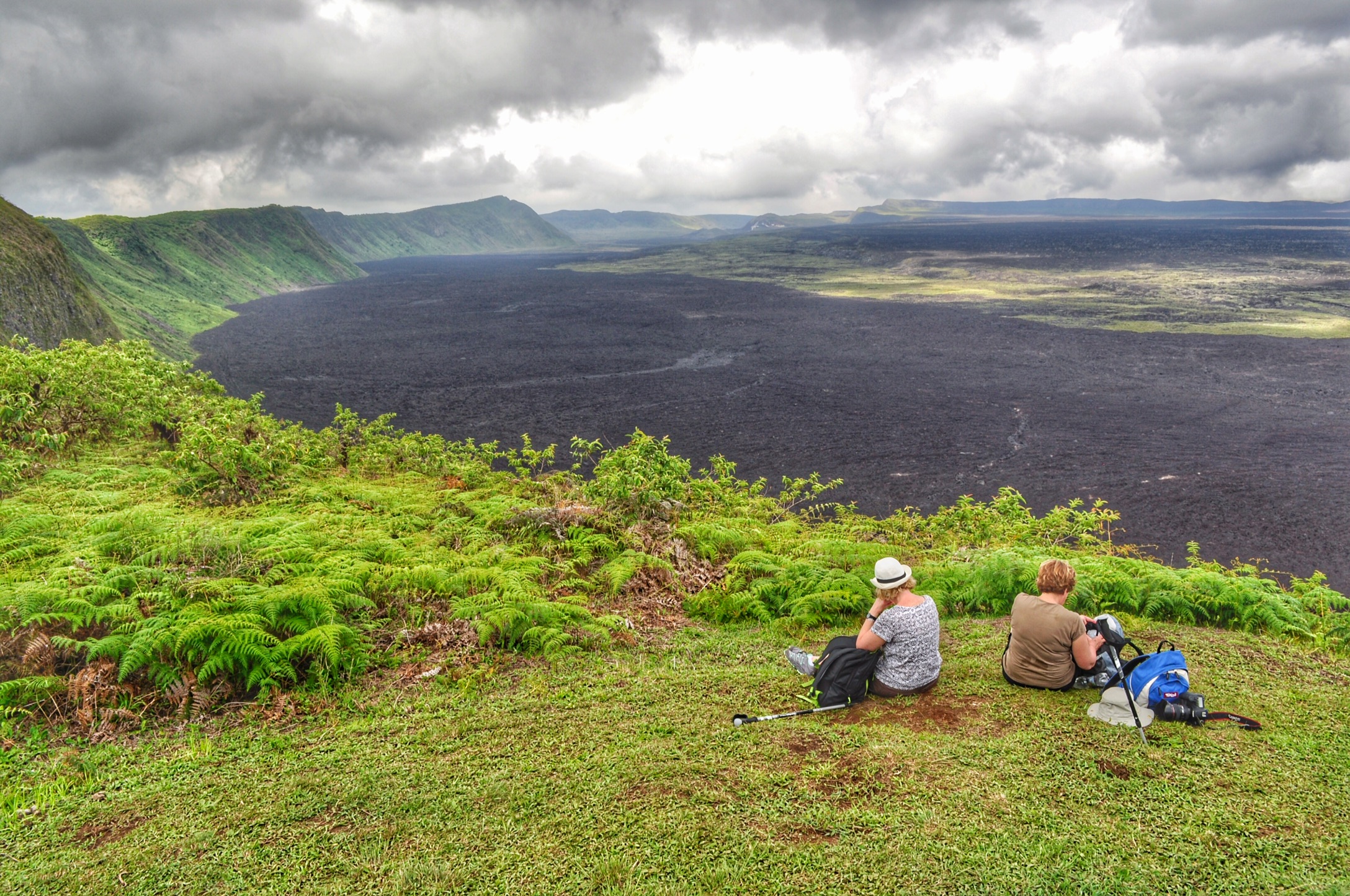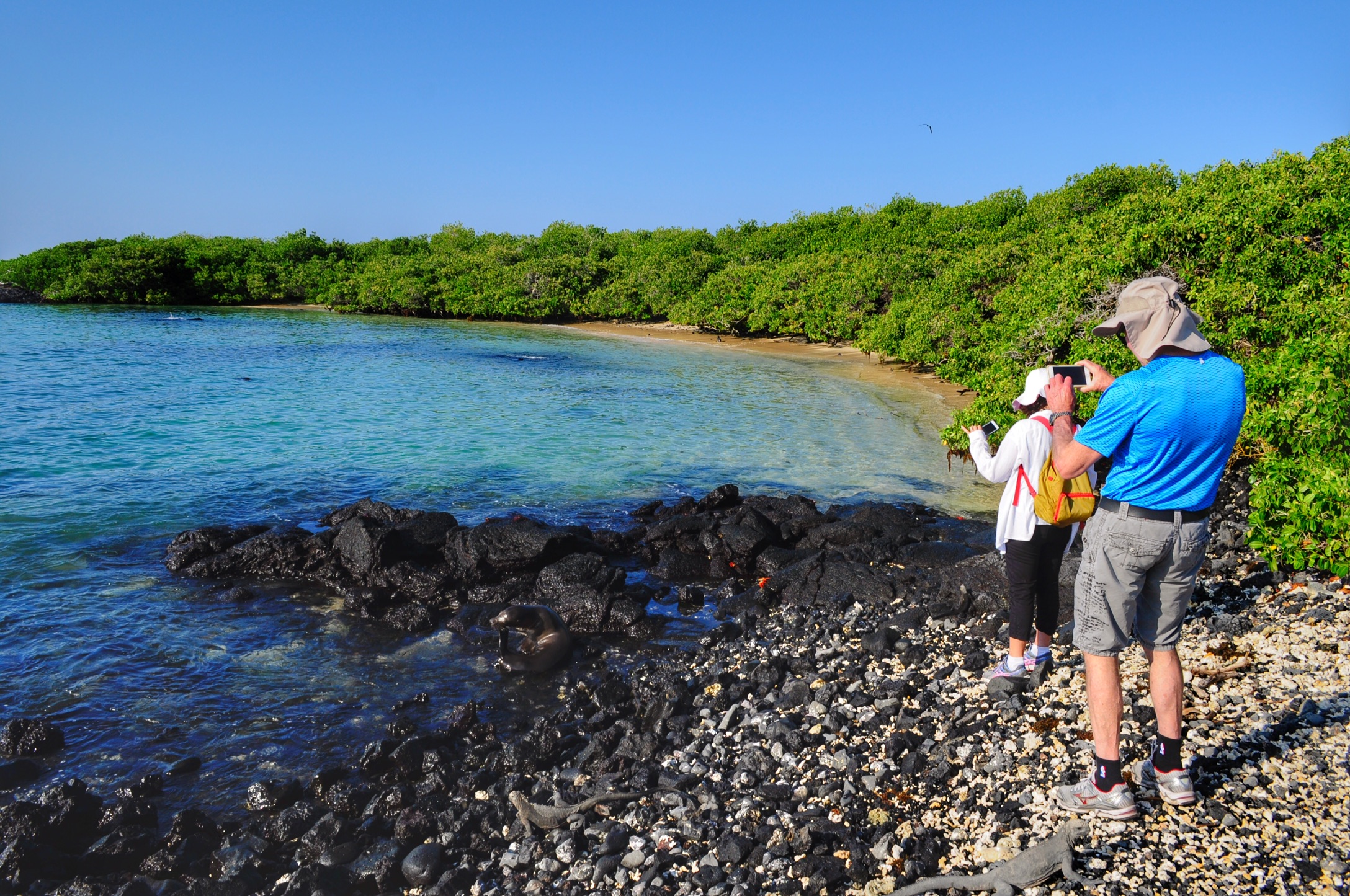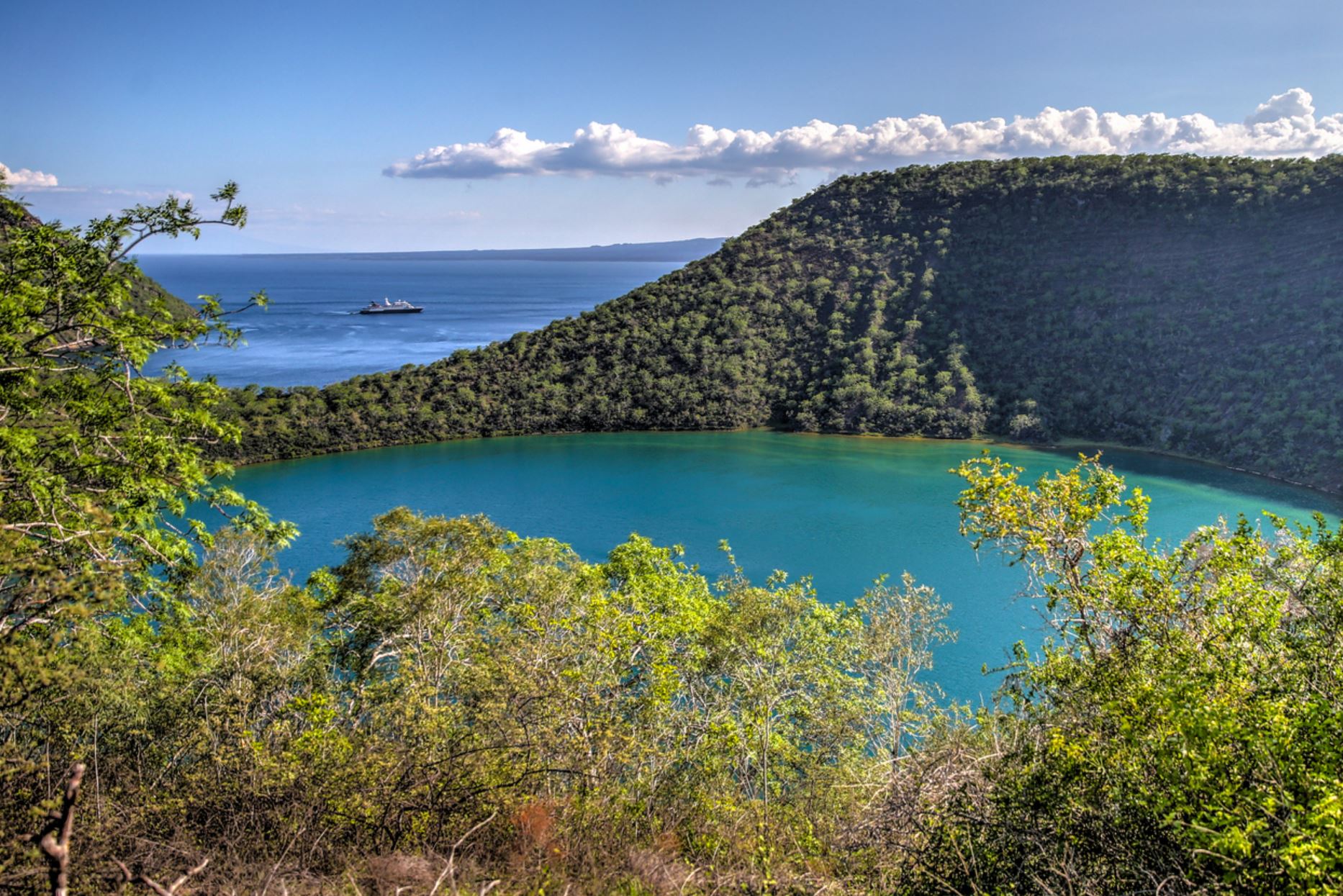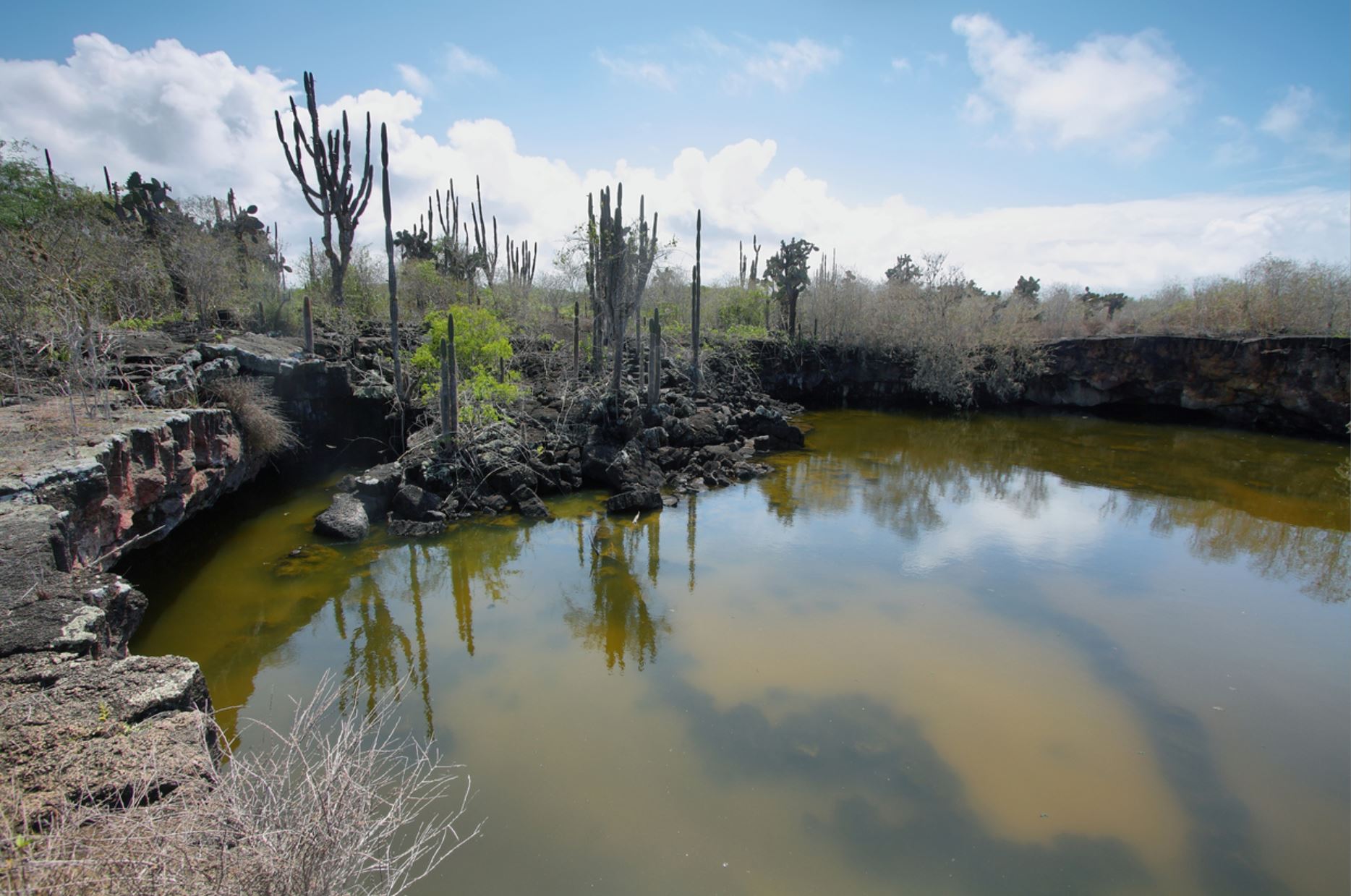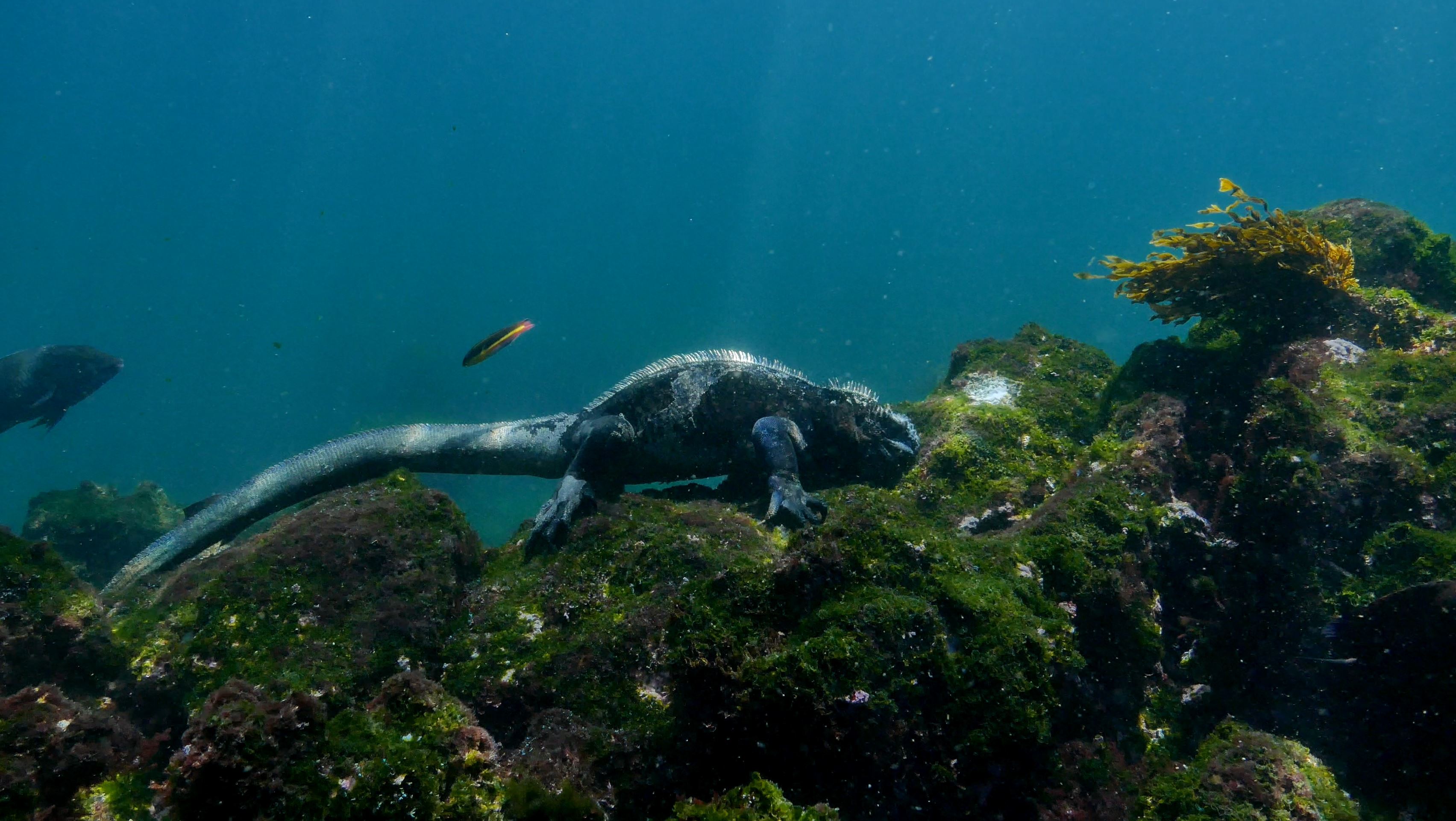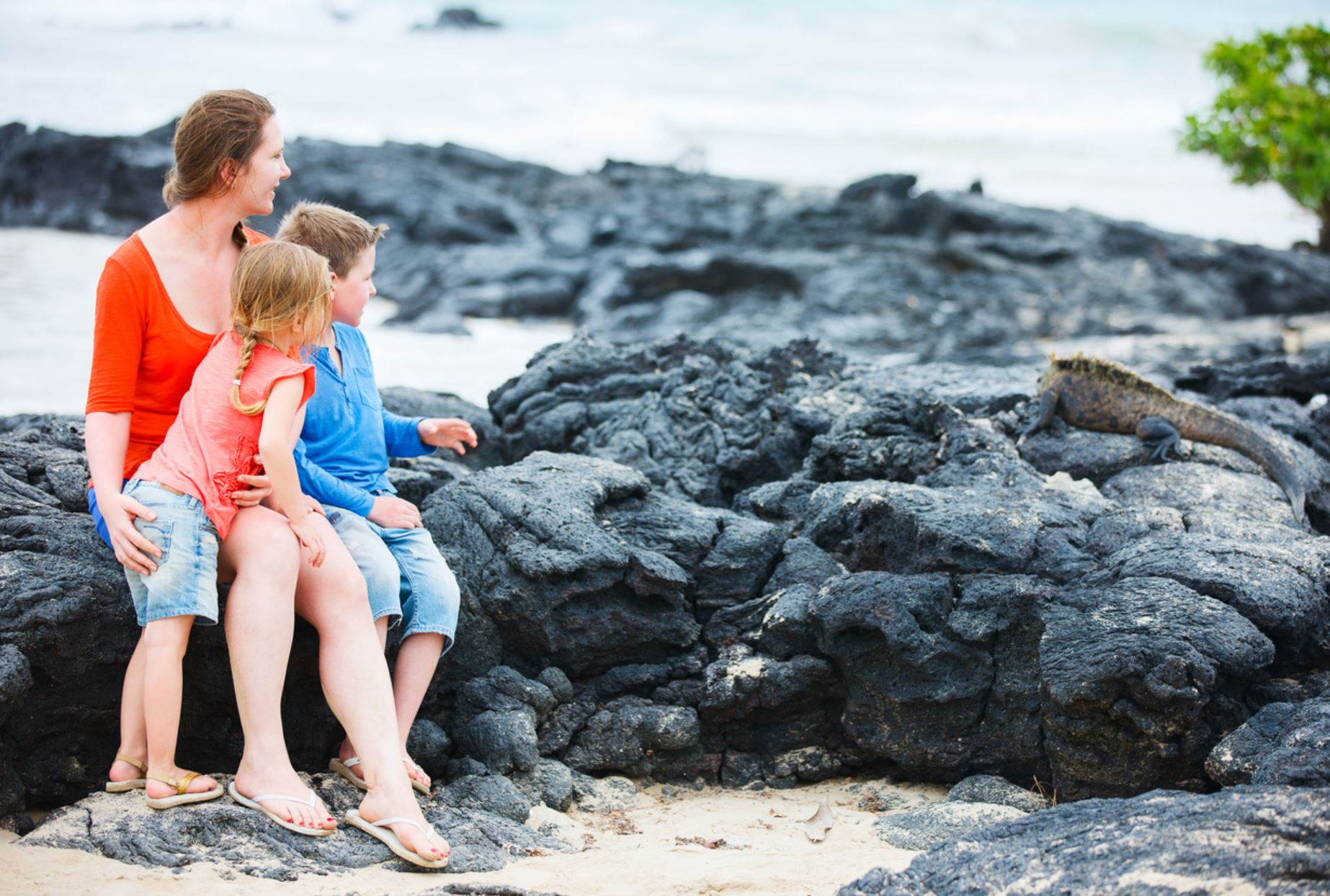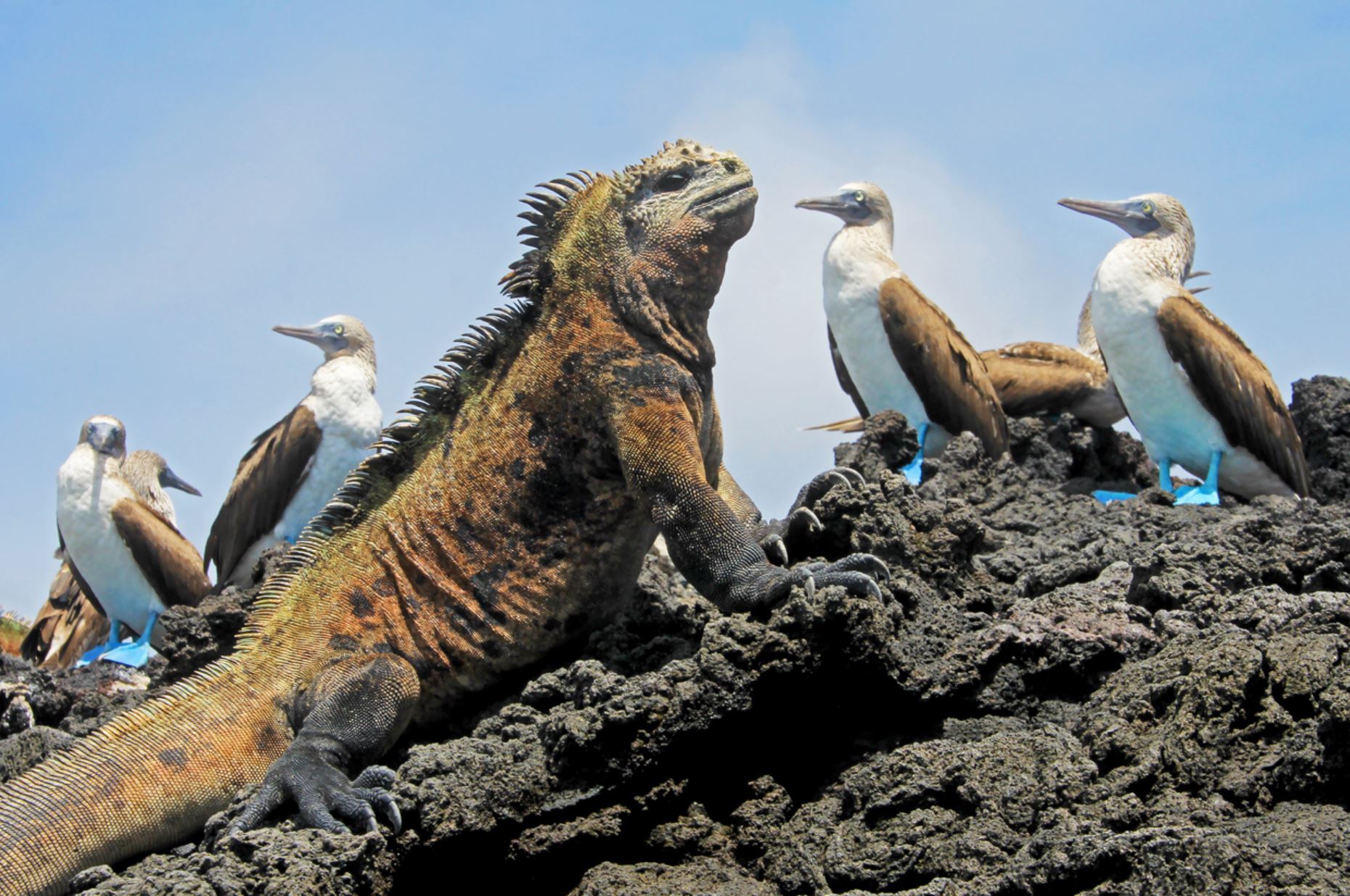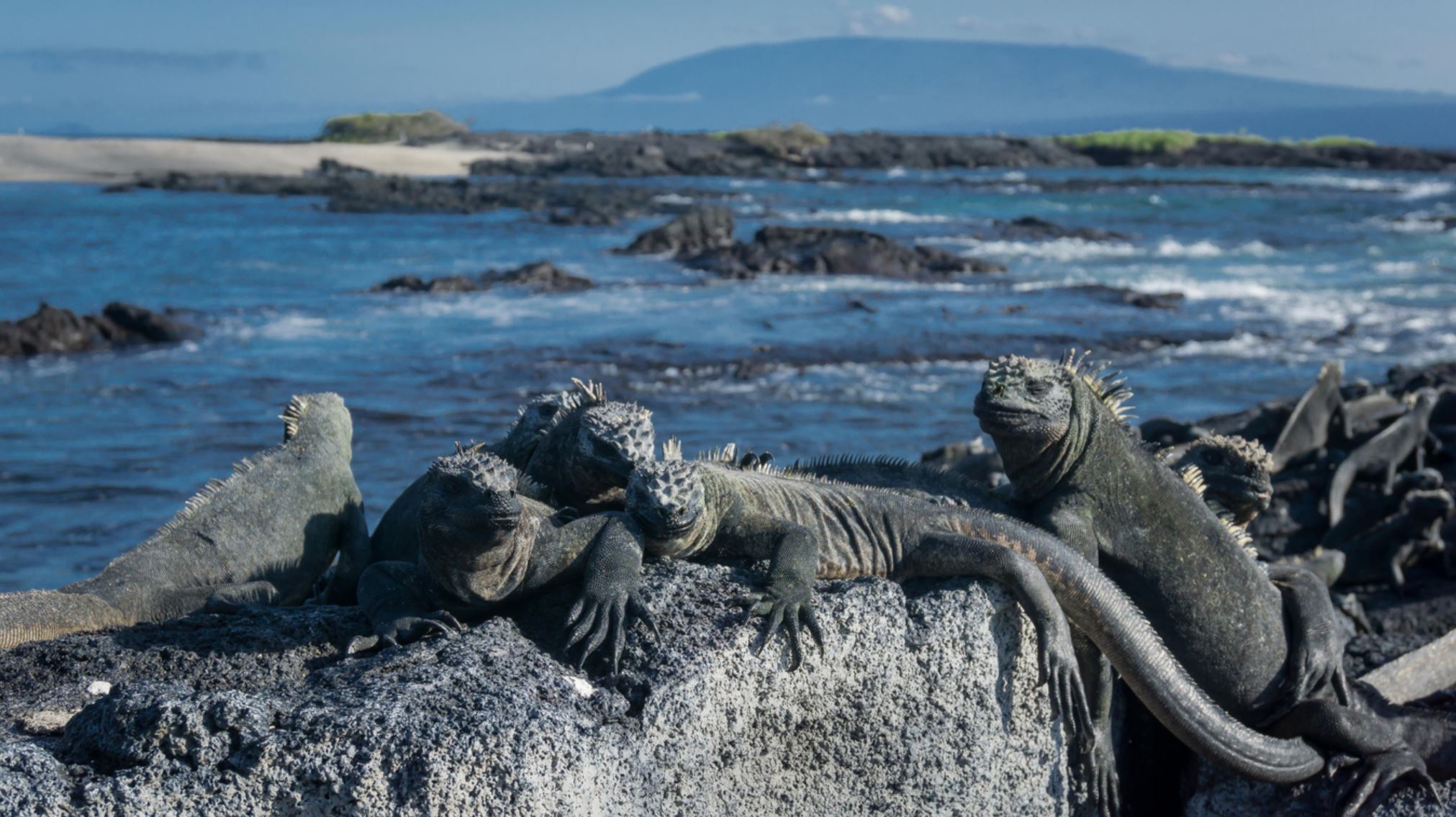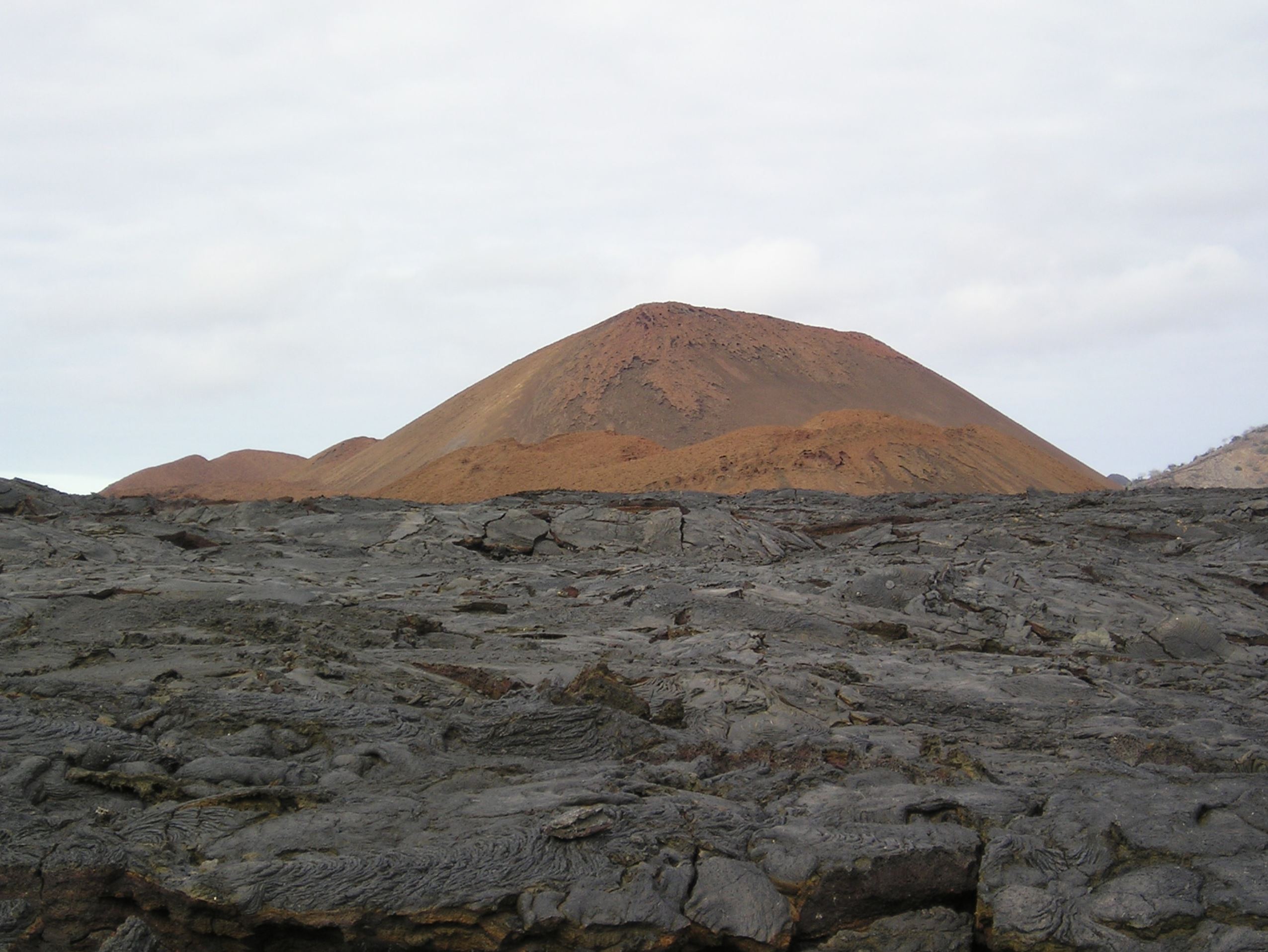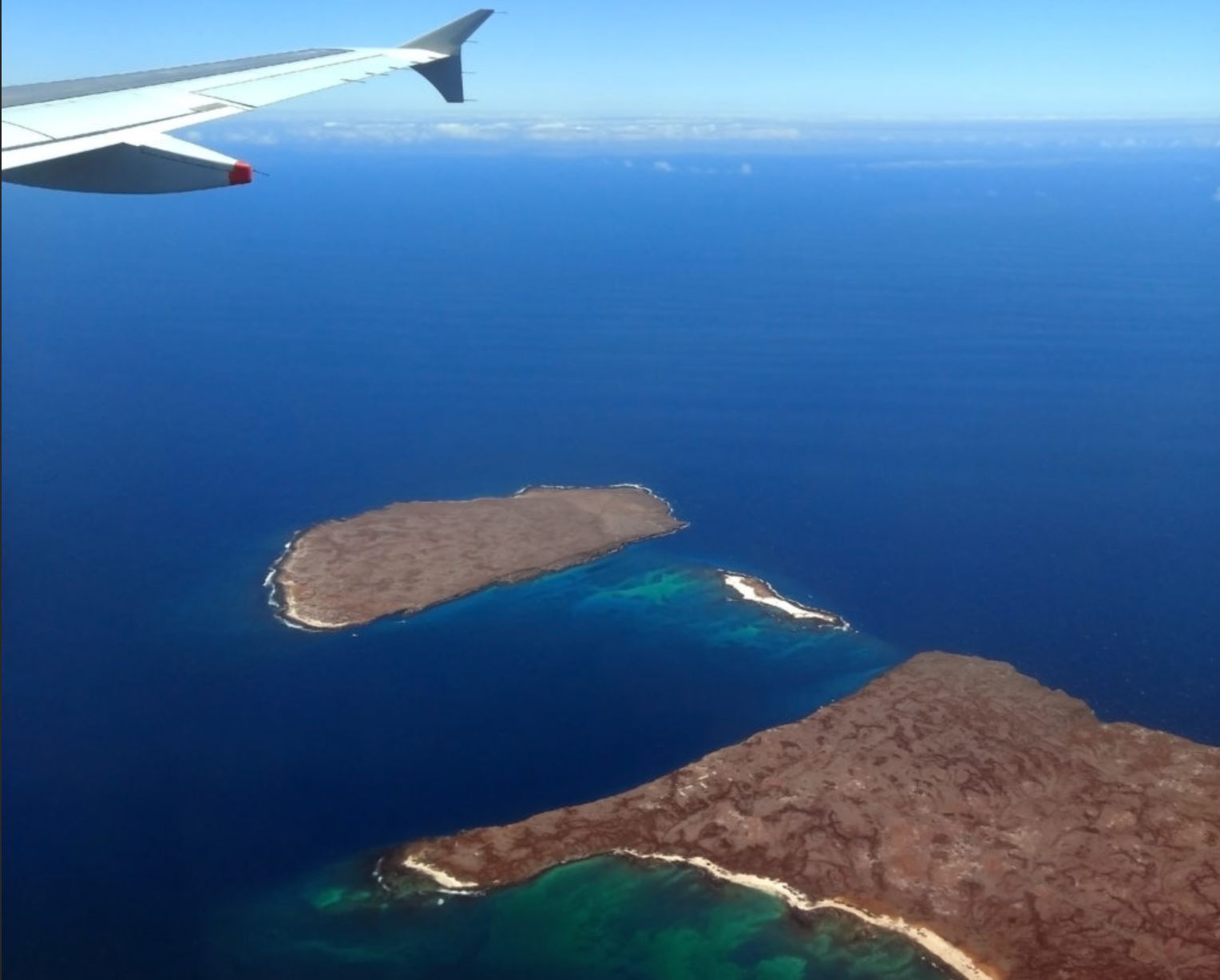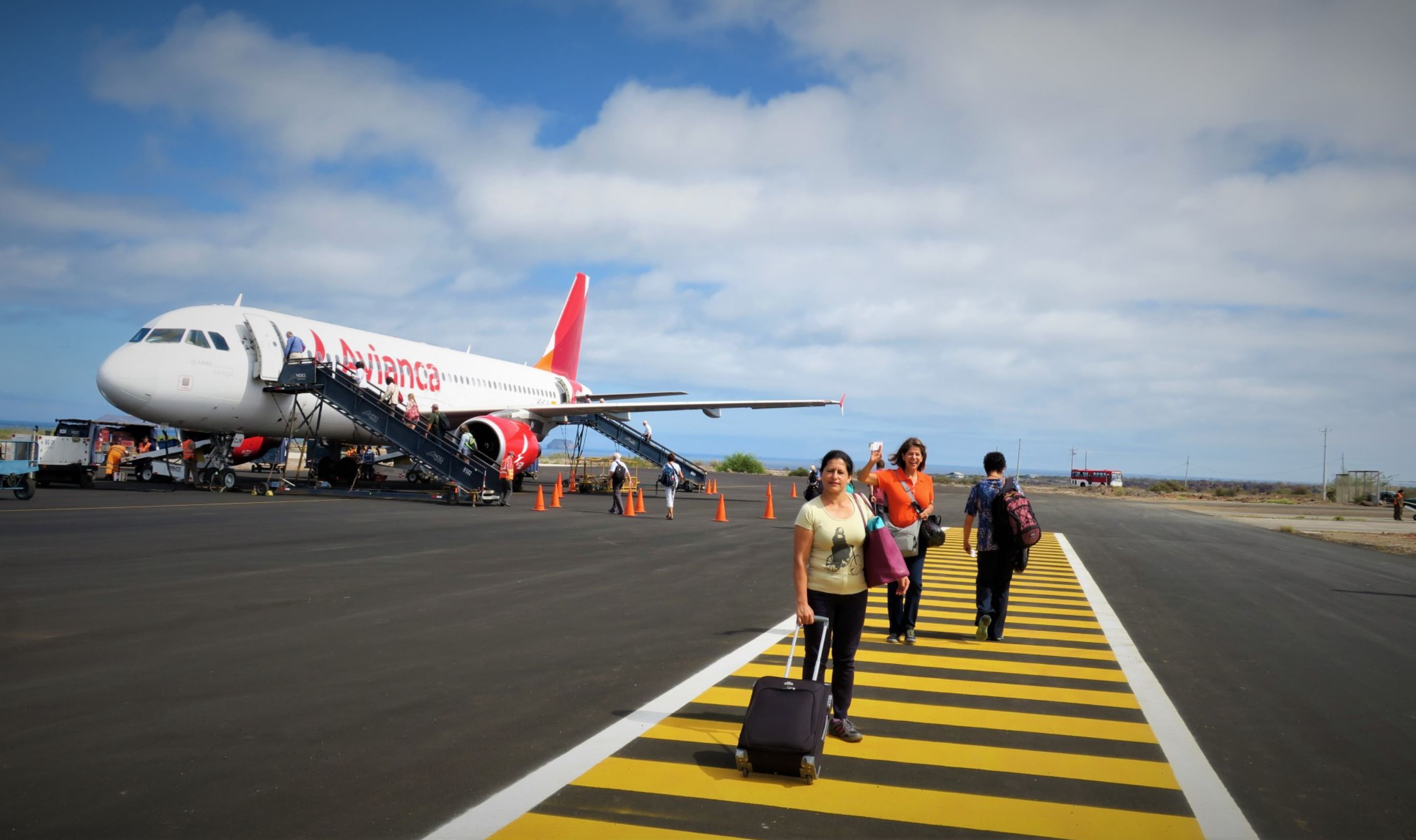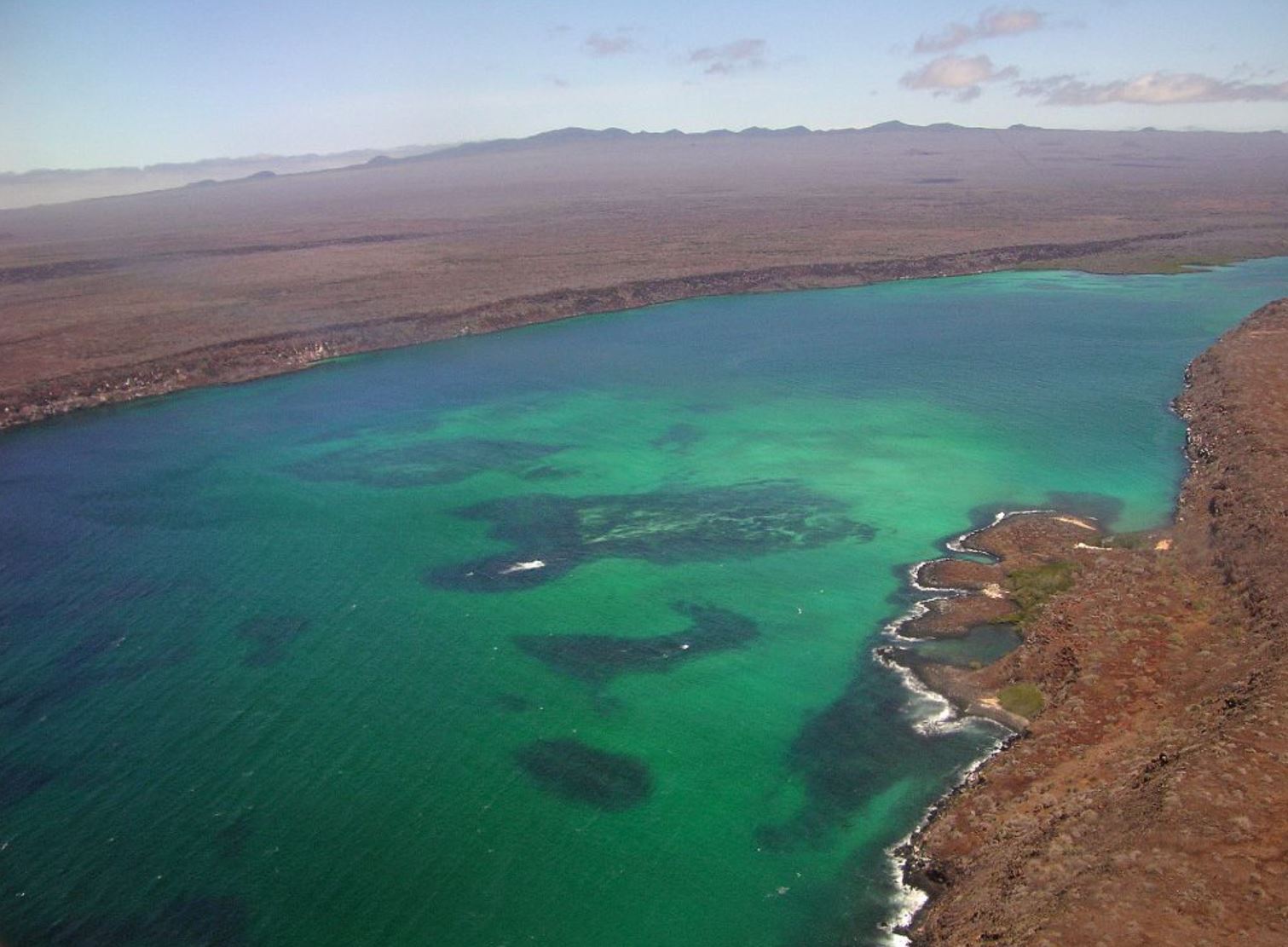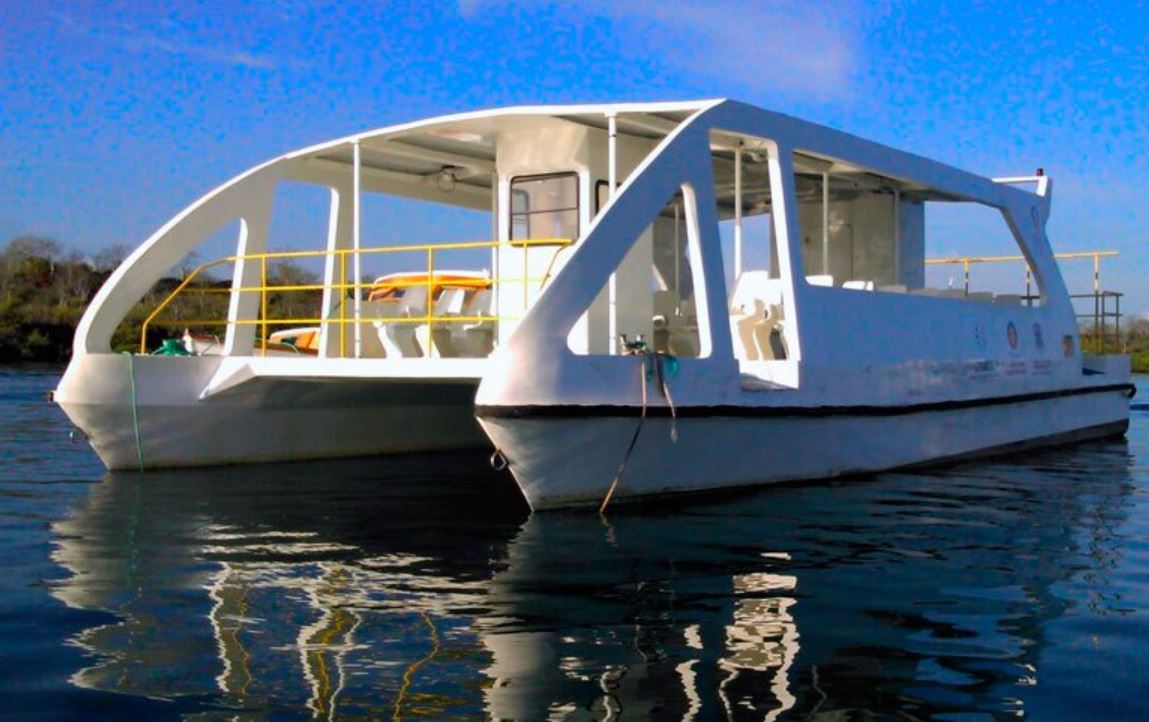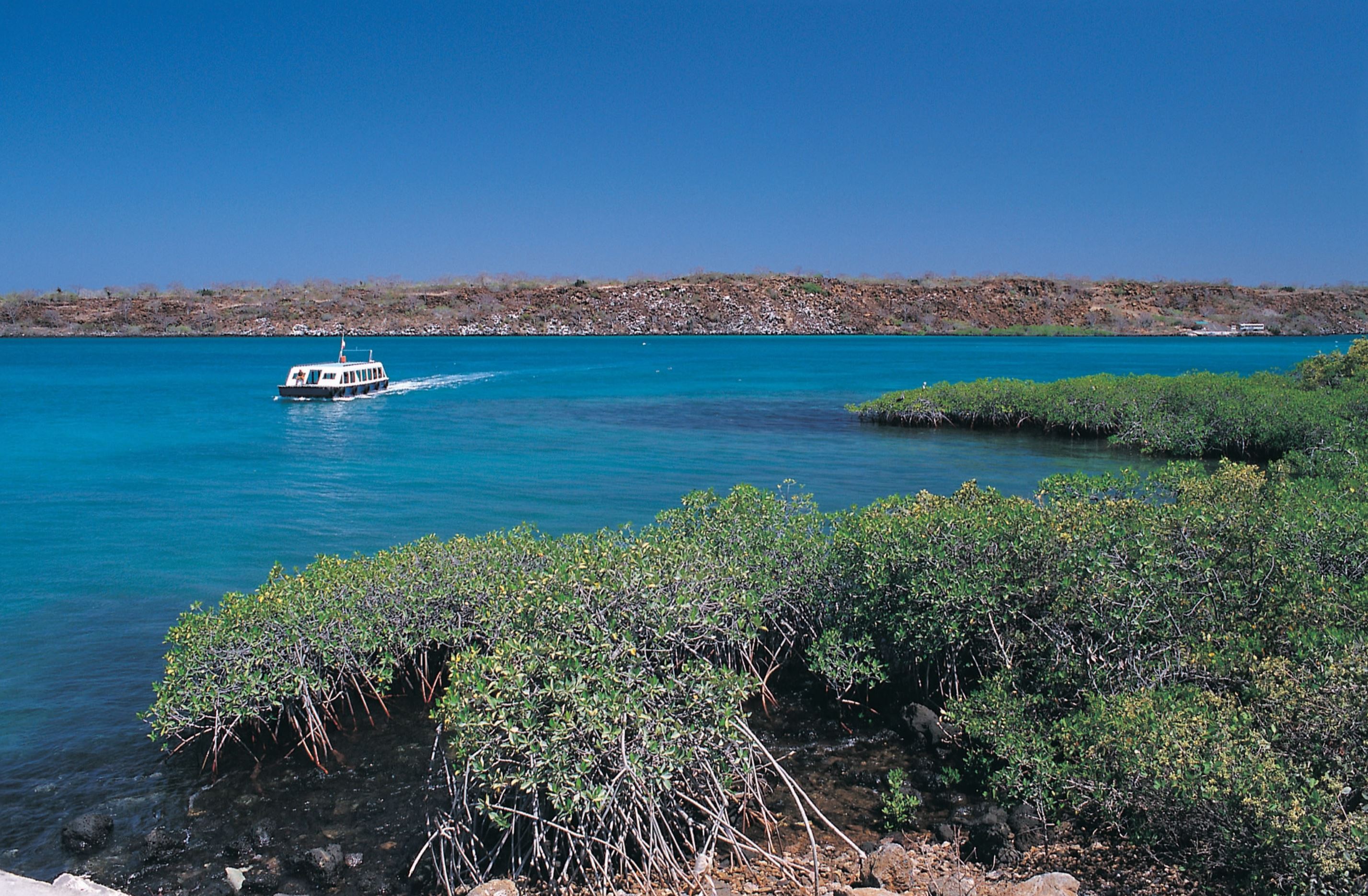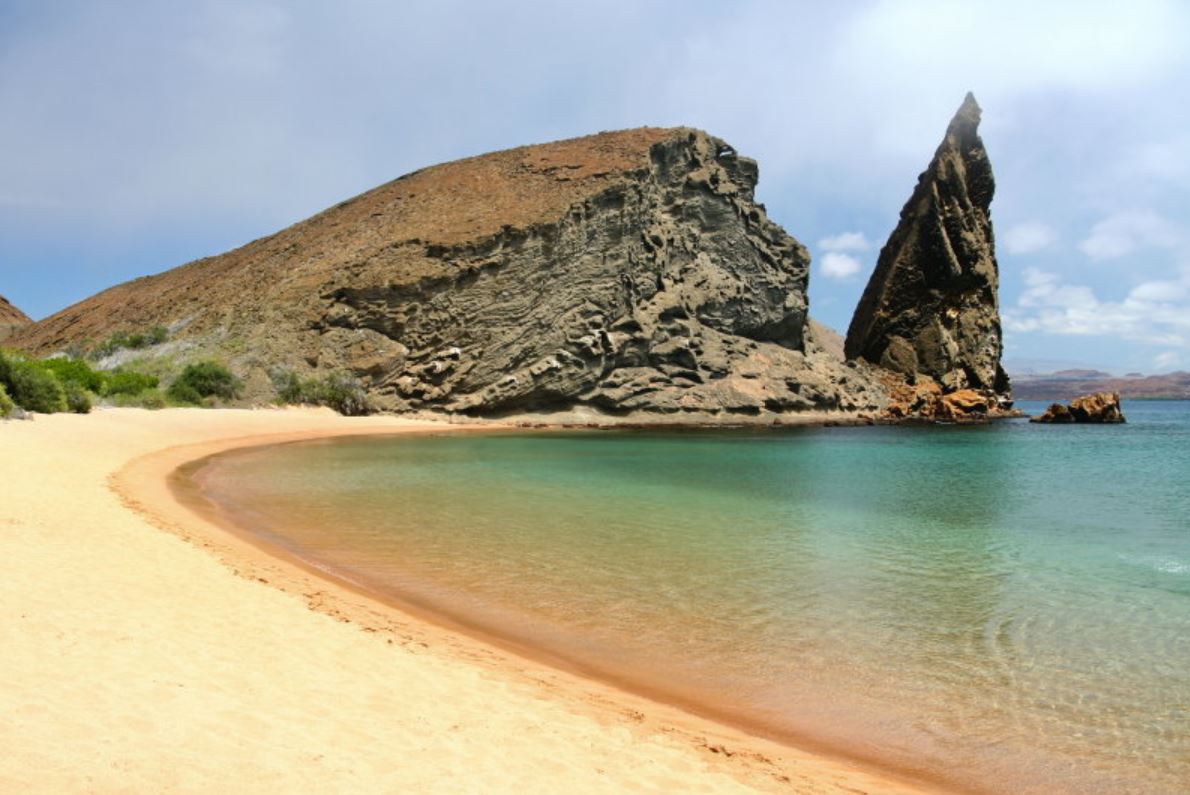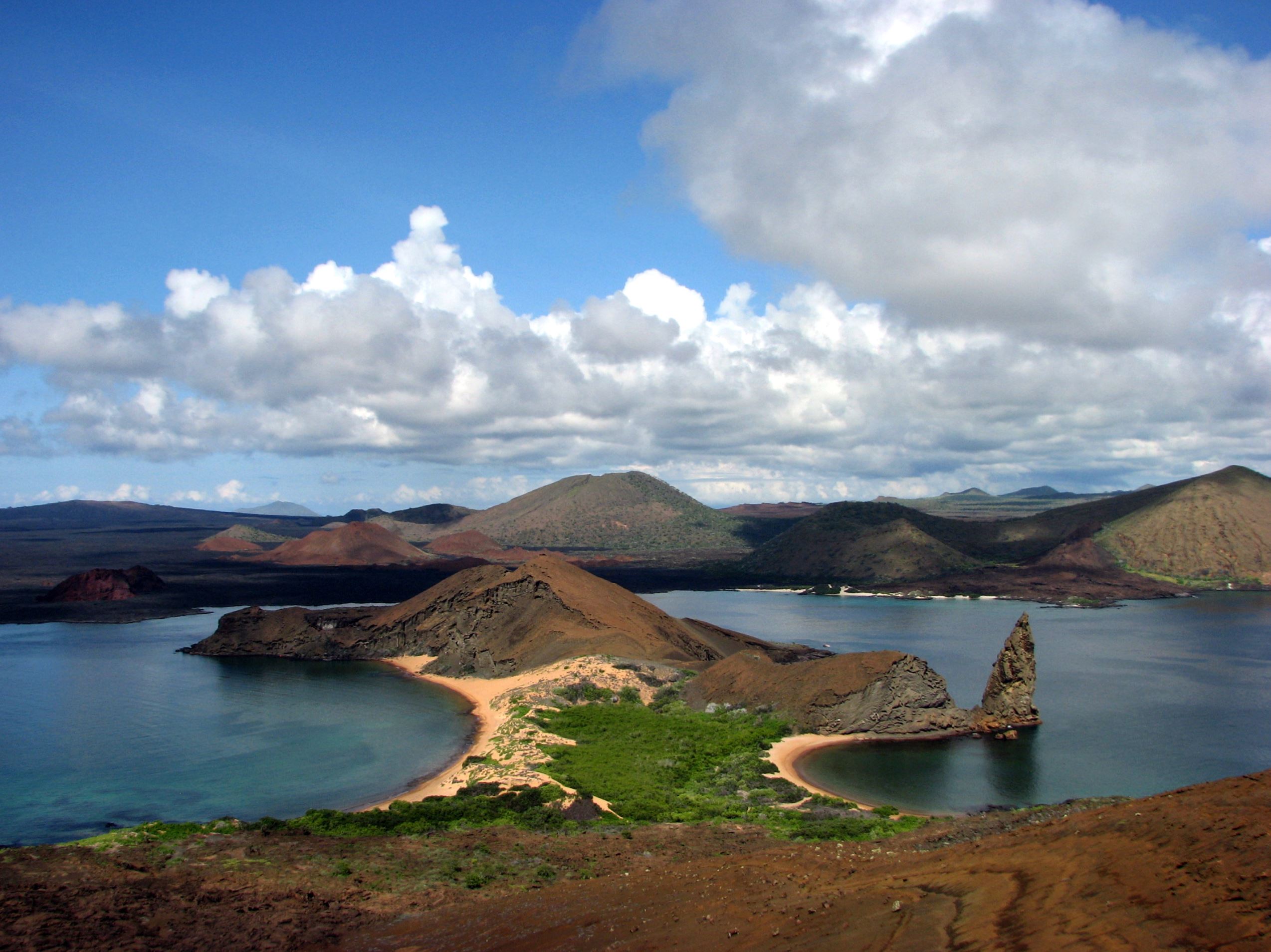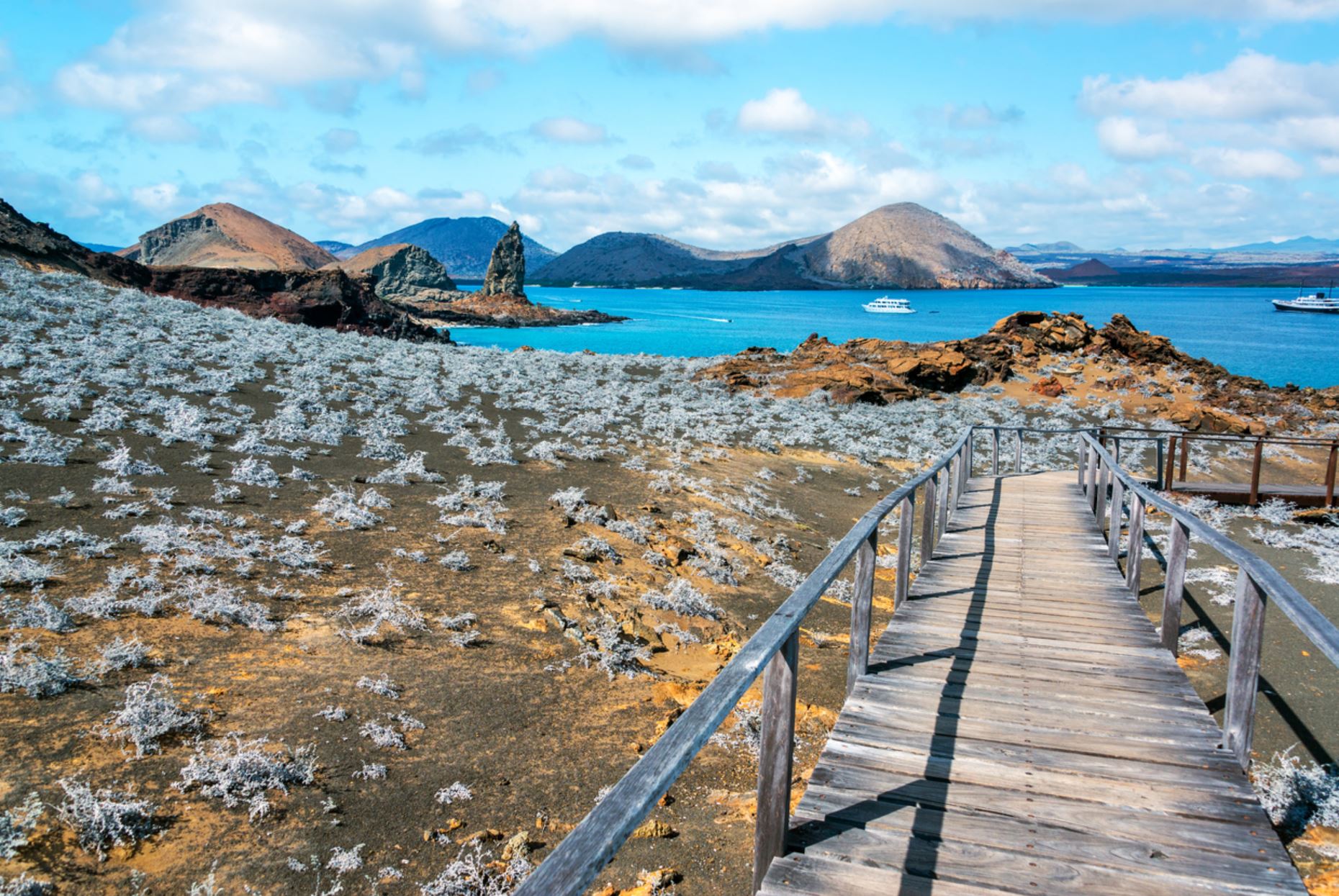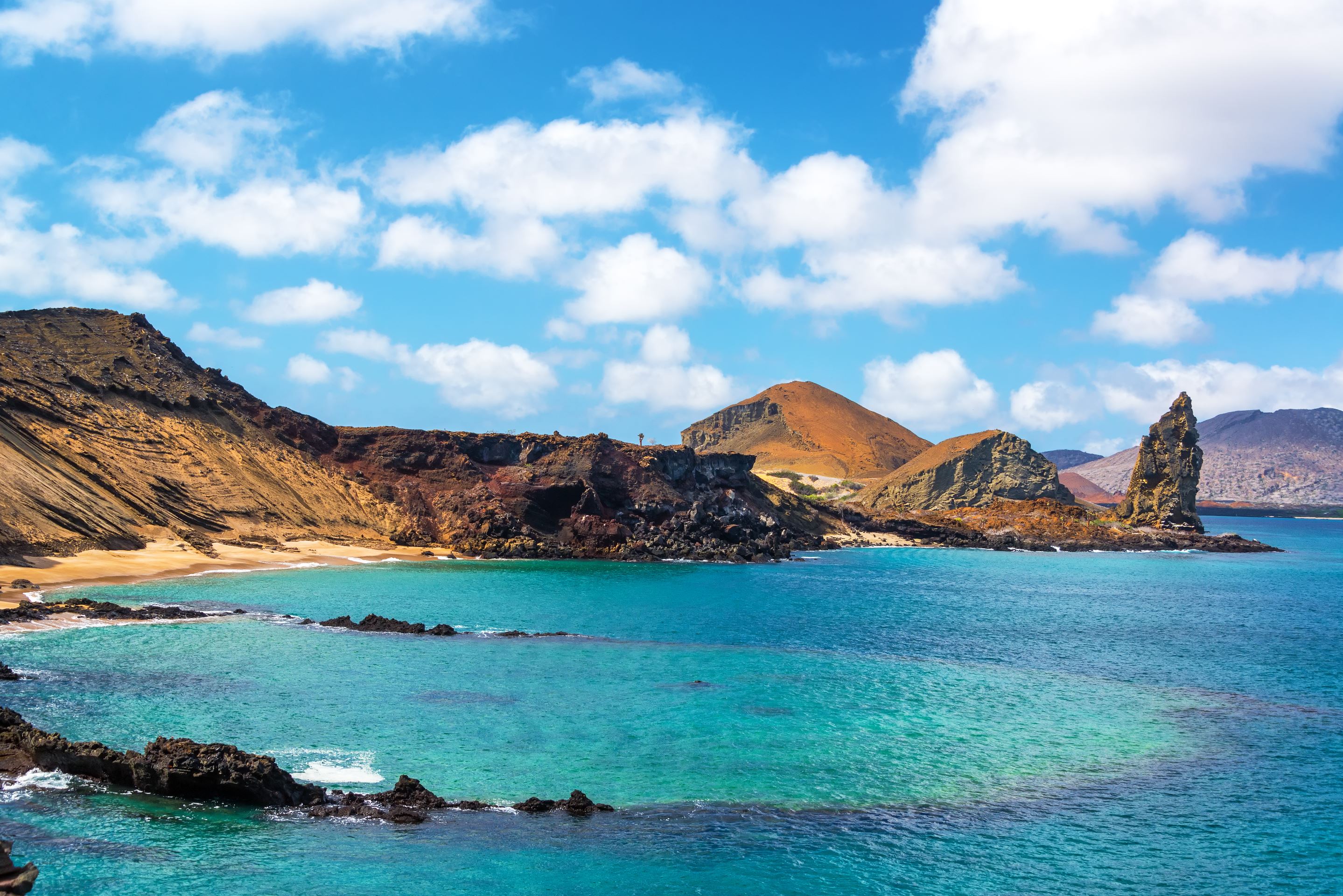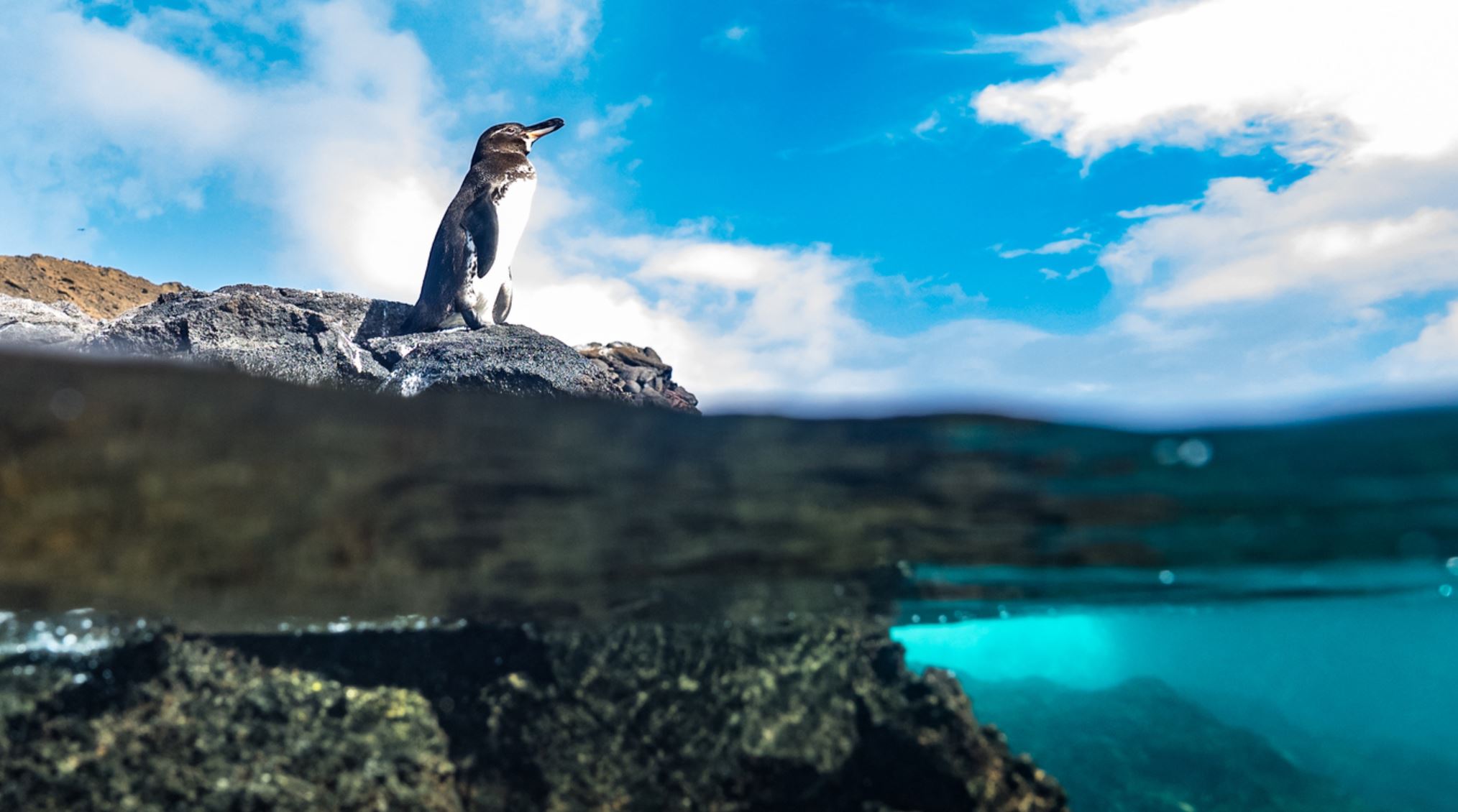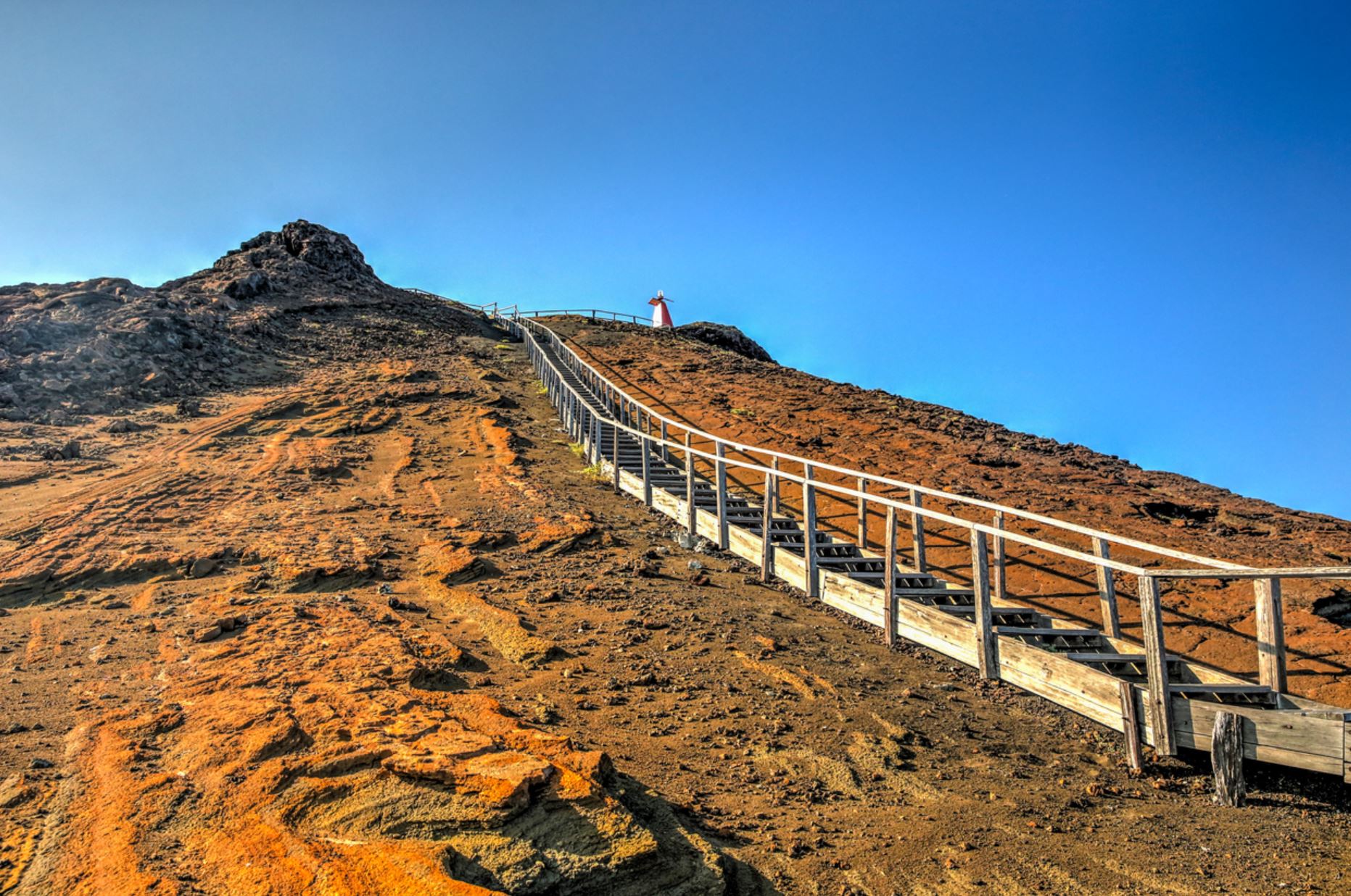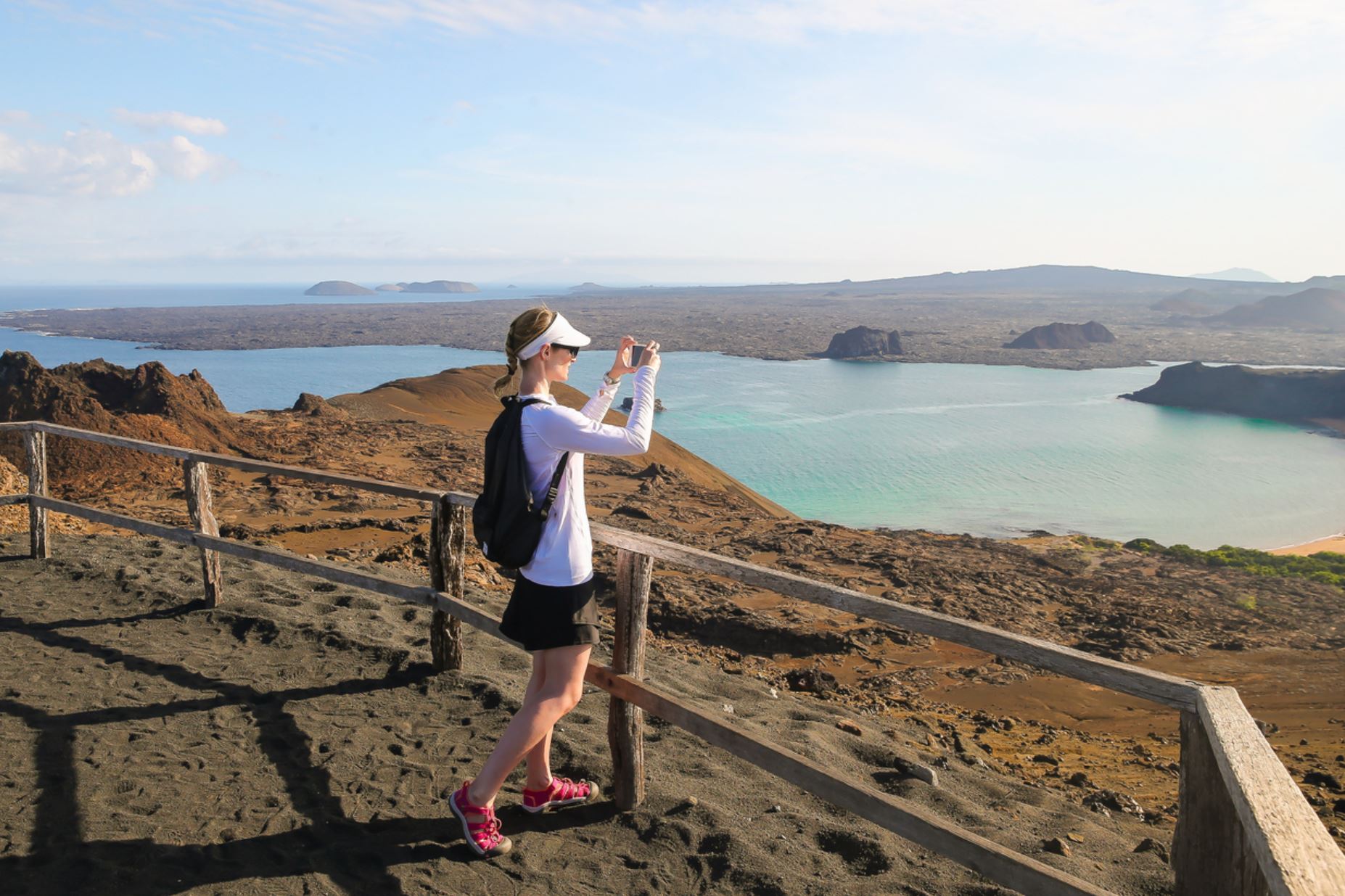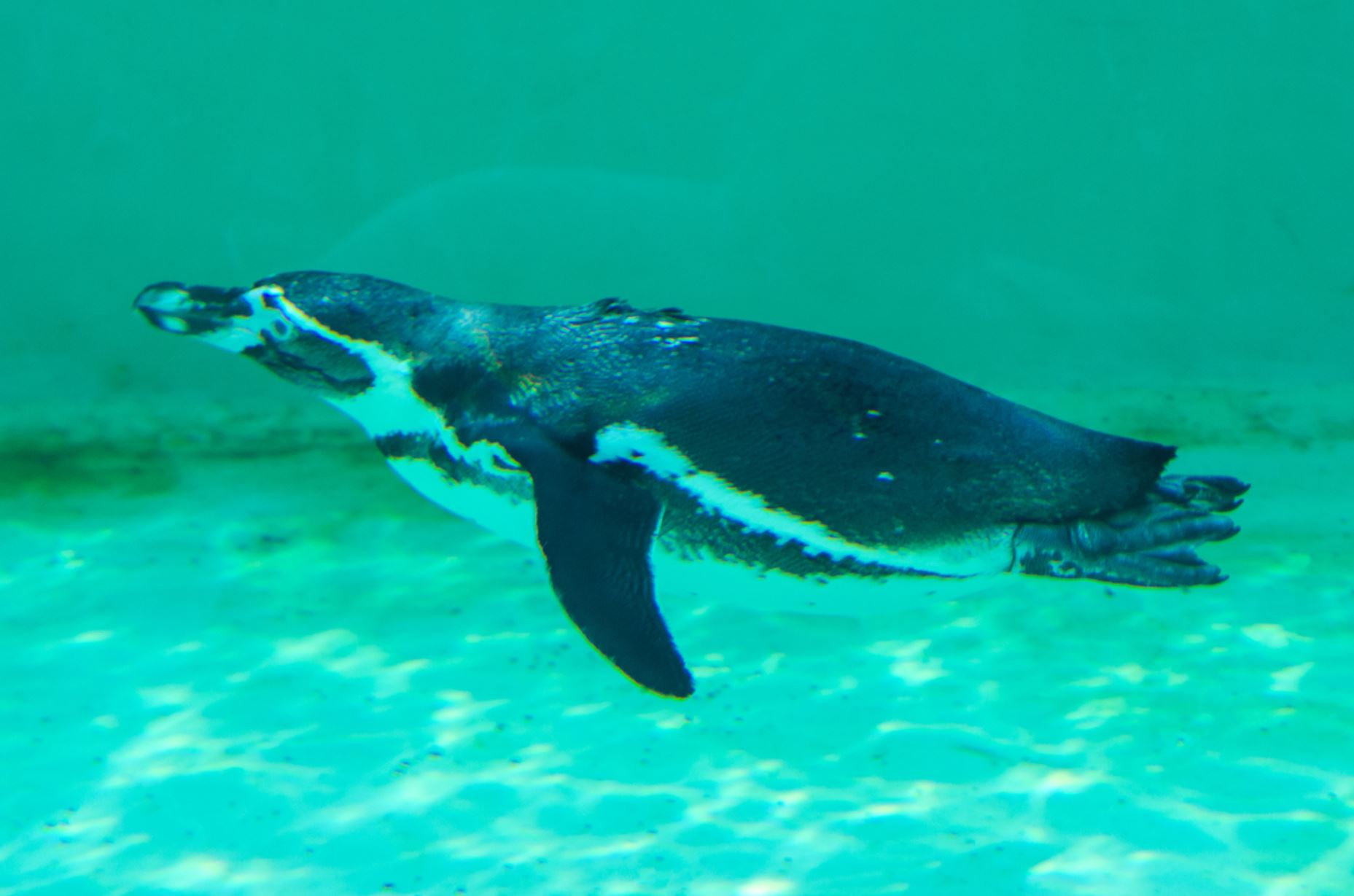Galapagos Penguin
The smallest of the penguins and the only species of penguin that lives in the tropics, at the north of the Equator line. These birds are endemic to the Galapagos islands, found only on islands that are touched by the Cromwell and Humboldt currents which bring deep cold waters filled with mullets, anchovies, and sardines, basics for their diet. They are avid swimmers, they can reach 30 km per hour when swimming in search of food.
Their height is of about 49 cms (19.2 in) with a black back and a white chest. They also have pinks patches along the feet and the face that helps them keep them cool on hot days. Females tend to be smaller than males. They reproduce all year round and stay with their mate for life. Females lay between one to two eggs in a nest made on the ground, in the volcanic porosity. The egg hatches in about 35 days; sixty days later the chick leaves the nest and some months later starts to feed by itself.
It is estimated that there are about 2,000 of these birds living in the archipelago, most of their populations can be seen mainly in Fernandina and Isabela island. However, small colonies can also be found around other places in the archipelago such as Bartolome, Floreana, and Santiago on occasional sightings.
- Animal Group: Seabirds
- Scientific Name: Spheniscus mendiculus
- Animal Average Size: 49 cm
- Animal Average Weight: 2.5 kg
Fernandina, Isabela, Bartolomé, Baltra
Pictures
Islands where you can see the animal with a little luck:
Isabela
The largest island of the archipelago and is easily recognized due to its shape that resembles a seahorse. Well known for having the second biggest active crater of the world in Sierra Negra Volcano (1.490 m), is located on the west of the archipelago and has one of the richest marine ecosystems. Isabela together with Fernandina are still located over the hot spot, causing volcanic activity until today, making them the youngest islands of the archipelago. Wolf Volcano had activity just last year giving visitors the chance to see how the islands grow and turn into what we know today.
It was formed into a big island mass by six volcanoes that in the beginning were six different islands, five of which are still active. Each one of them is populated by a different specie of Tortoise that used to live in a separated island.
Home of Penguins, Flightless Cormorants, Marine and Land Iguanas and many Marine Birds, Isabela also portrays the picture of the evolving process that these species went through in all different locations of the same island. Named Albermale by the English colonizers, it offers not only diverse ecosystems but also some of the most amazing landscapes and natural sights of the archipelago.
Small human population in the south of the islands. This is one of the four populated islands; about 2200 people live in Puerto Villamil. This town is the result of almost 300 years of interesting human interactions related to military plans and prison breakouts, and today is a welcoming site to explore and encounter the settlements that can tell the story.
Punta Vicente Roca visitor site is the best place to find the famous flightless cormorant. The evolution process that this specie went through can be observed on his behavior and environment on this location, providing evidence to understand Darwin’s theory of evolution. Located on the north side, the head of the sea horse is a very important marine productive area, hit by the Cromwell Current, offers the most extraordinary marine life so it is considered one of the best diving spots of the archipelago. Whales and sharks are often seen in our visits.
Bahia Urbina visitor site is located on the central west side of the island and is the only place of the archipelago where tortoises have been born and are still there, in other words, they are a natural, untouched population. All other have suffered migrations or problems with introduced species.
Visitors sites: Albemarle Point, Arnaldo Tupiza Tortoise Breeding Center, Cape Marshall, Concha de Perla, Cowley Islet, Elizabeth Bay, Las Tintoreras, Moreno Point, Puerto Viallmil, Roca Blanca, Sierra Negra Volcano, Tagus Cove, The Wetlands, Urbina Bay, Vicente Rock Point, Wall of Tears
Fernandina
Probably the only island in the world without introduced species. Admire astounding volcanic landscapes at a site often perceived as a ‘land without time’.
The youngest island of all, only 300 thousand years and is still active. Is located on the west side of the archipelago; siting on top of the hot spot. During the Galapagos National Park existence there have been 13 eruptions, the last eruptions ocrurred on the 2005 and 2009 and the 4th of September 2017 (eruption of the Cumbre volcano).
It is an unpopulated island.
Because of the lava flow only mangrove zones and pioneer cacti have survived its geological environment. This specie has created one of the most amazing and attractive miniature forests in the world, a place to evidence adaptation skills to the absence of soil.
The land of Dragons: This island has a big population of Marine Iguanas that survive thanks to its adaptation to feeding on algae. This is one of the best places to evidence the features that back in the day, pushed the Iguanas to evolve into marine animals, here you can visit the blackest and biggest iguanas of all visiting sites. Also a population of Land Iguanas inhabit the active crater of the island.
Flightless Cormorant biggest population to be visited. This island is home for this famous bird that lost his ability to fly because in his environment it wasn’t needed. This bird adapted to food availability being underwater so it developed amazing swimming and diving skills. To visit this colony is to evidence the evolutionary process alive.
Magical light: Its geological nature gives this island a very special light due to its reflection on the minerals and ground, it portrays a polarized picture of reality. It has a very distinct atmosphere from any other location in the archipelago.
Visitor sites:
Cape Douglas, Espinosa Point, Mangle Point
Baltra
Baltra Island is a small island of the Galapagos Islands. Also known as South Seymour , Baltra is a small flat island located near the center of the Galapagos. It was created by geological uplift. The island is very arid and vegetation consists of salt bushes, prickly pear cactus and palo santo trees.
The ultimate origin of the name "Baltra" for the island is unknown. "Baltra" is a Spanish surname (particularly Chilean), so it is presumably named after a person. The name is first found in print in the 1927 edition of the South America Pilot by the British Admiralty; it was added after the 1915 edition, but the document explaining the source has been lost. The name is sometimes incorrectly believed to be an acronym used by the US military, though the term predates the US base.
During World War II, Baltra was established as a United States Army Air Force base. Crews stationed at Baltra patrolled the eastern Pacific for enemy submarines and protected the Panama Canal.
After the war, the facilities were given to the government of Ecuador. Today the island continues as an official Ecuadorian military base. The foundations of buildings and other remains of the US base including the old airfield can still be seen on the island.
Until 1986, Seymour Airport was the only airport serving the Galapagos. Now, two airports receive flights from the continent, the other being San Cristobal Airport on San Cristobal Island. Private planes flying to the islands must fly to Baltra as it is the only airport with overnight facilities for planes.
On arriving at Baltra, all visitors are transported by bus to one of two docks. The first dock is located in a small bay where the boats cruising the Galápagos await passengers. The second is a ferry dock, which connects Baltra to the island of Santa Cruz vai the Itabaca Channel.
Constructions for a larger, modernized airport began in 2011, and as of early 2013 it has started operation and the old buildings are being dismantled.
Baltra is currently not within the boundaries of the Galapagos National Park. The Galapagos land iguana is the subject of an active re-introduction campaign on the island; they became extinct on Baltra in 1954. However, in the early 1930s, Captain G. Allan Hancock had translocated a population of Galápagos land iguanas from Baltra to North Seymour Island (spanisch: Seymour norte), a smaller island just a few hundred meters north of Baltra. The iguanas survived and became the breeding stock for the successful Charles Research Station captive breeding program. During the 1980s, iguanas from North Seymour were brought to the Darwin Research Station as part of this project, and, in the 1990s, land iguanas were reintroduced to Baltra. As of 1997, scientists counted 97 iguanas living on strict Baltra, 13 of which were born on the islands. It is not uncommon to see iguanas either crossing the main road or on the runway at the airport.
Visitor sites (close to Baltra):
Daphne Major, Daphne Minor, Mosquera Islet, Mosquera Diving area
Bartolomé
Bartolomé Island is one of the smaller and geologically younger in the Galápagos Islands. It is located slightly east of Santiago (also called San Salvador or James Island) and has a size of 1.2 km². It is named after Sir Bartholomew James Sulivan of the Royal Navy. The highest point on the island is 114 meters. Special attractions are the beaches, the Pinnacle Rock, , which can often be seen in photos of Galápagos, as well as Galápagos penguins and fish stocks.
Most important point of visit: 114 meter high hill with a fantastic view and a very beautiful beach with a view of Pinnacle Rock
Mr. Frobeen can give you precise information about the ships.
Mr. Frobeen will be happy to advise you by phone at +49 (0)7633 9399360 or via email info@frobeen.de
If you want to book, what are the payment methods?
The reservation is gratis as an option.
If you want to make an fixed booking, there is to pay a deposit of 20%.
The remaining payment is due 4 weeks before departure. In individual cases, such as diving cruises, other rules apply. Information on request.
- Your payments are insured against bankruptcy!

